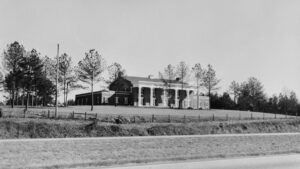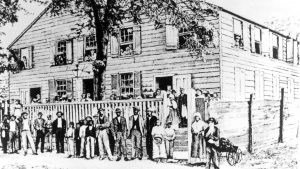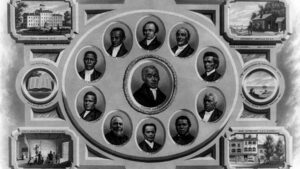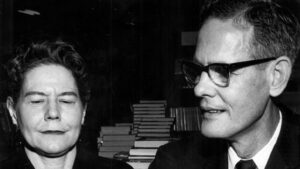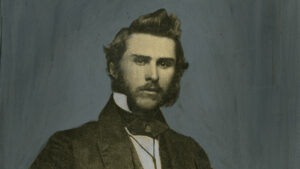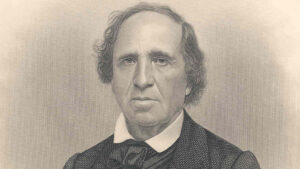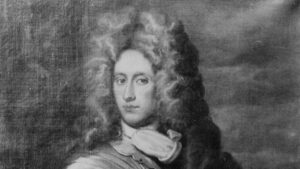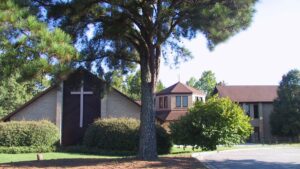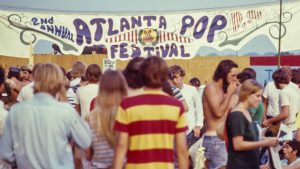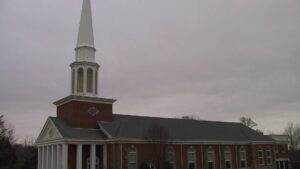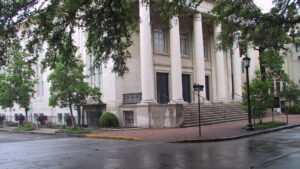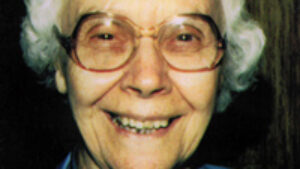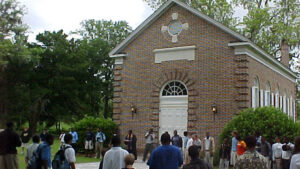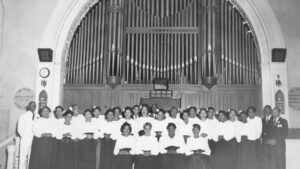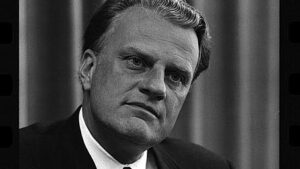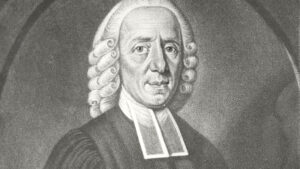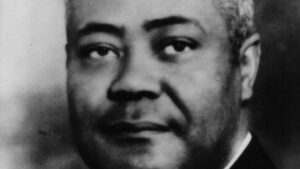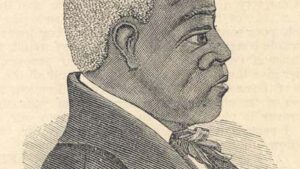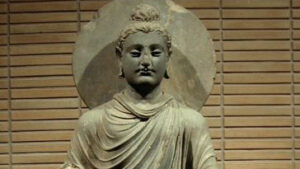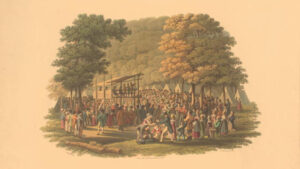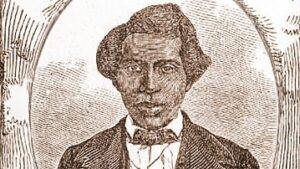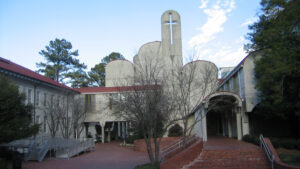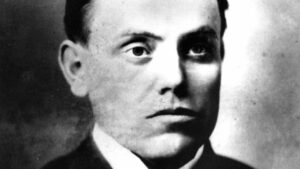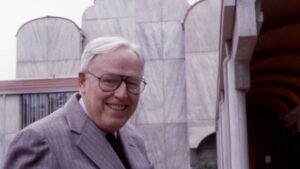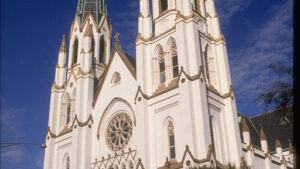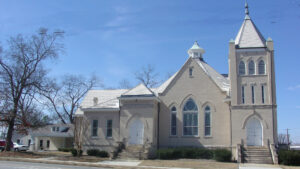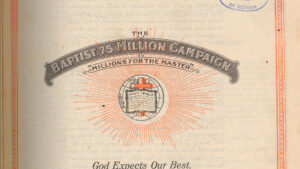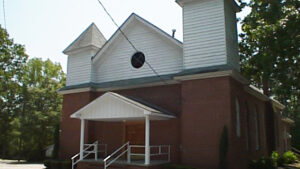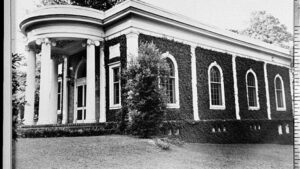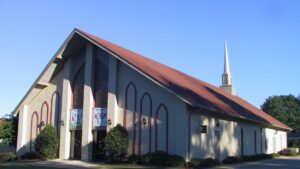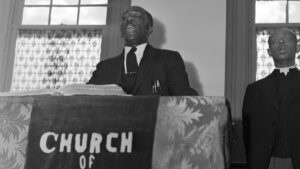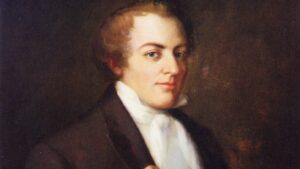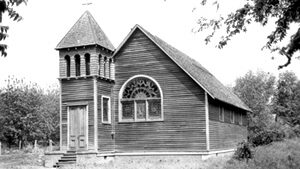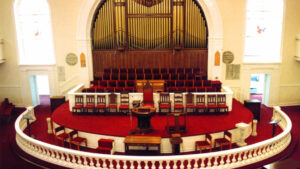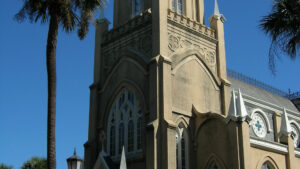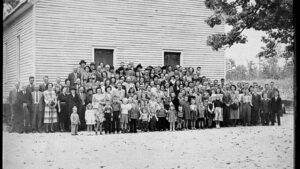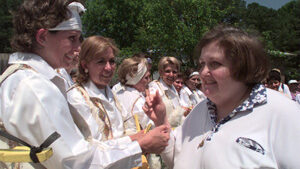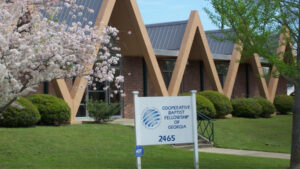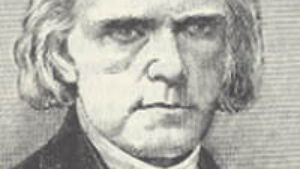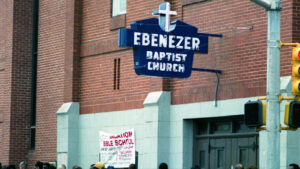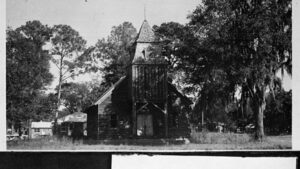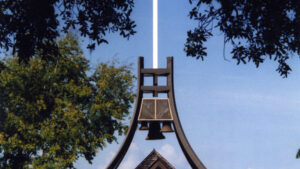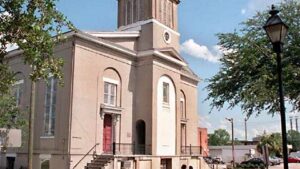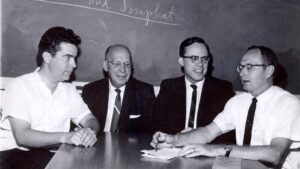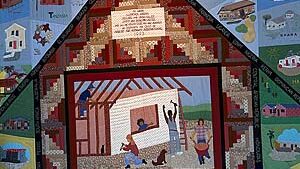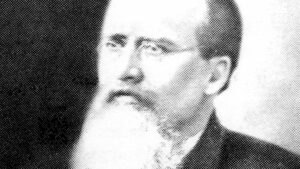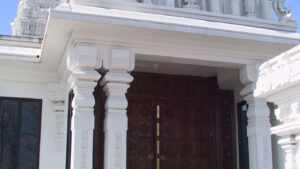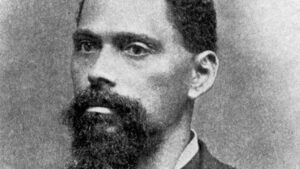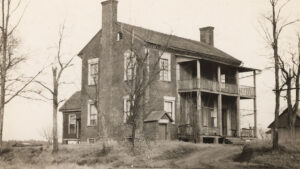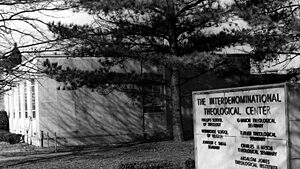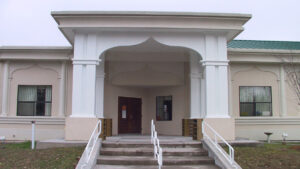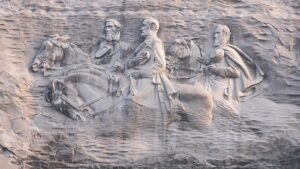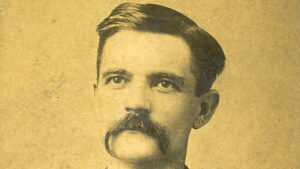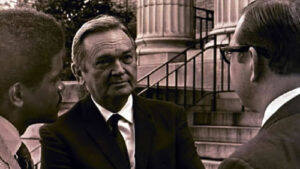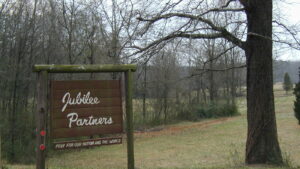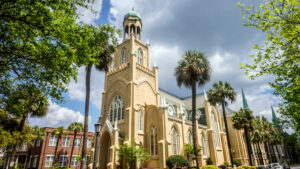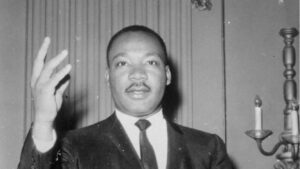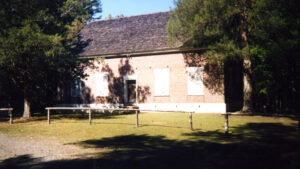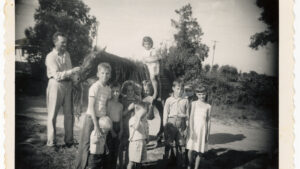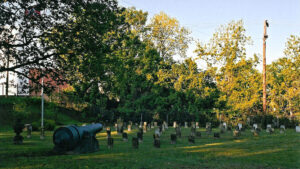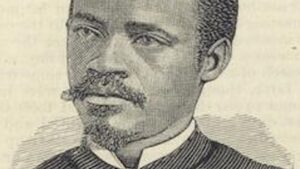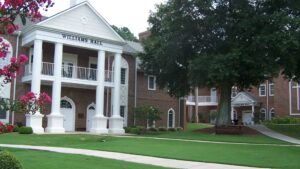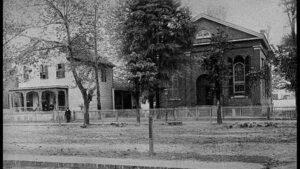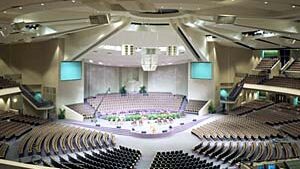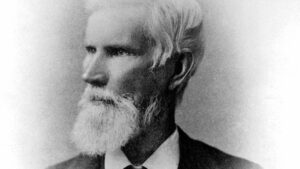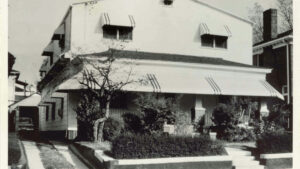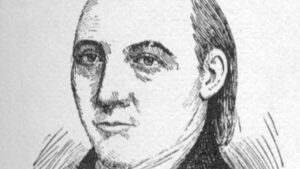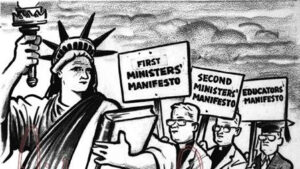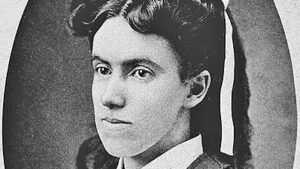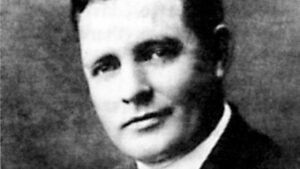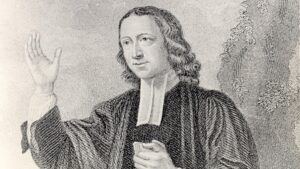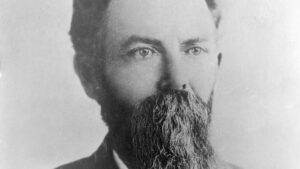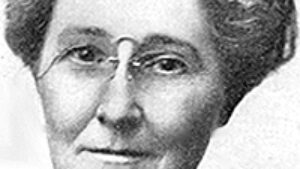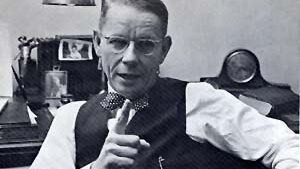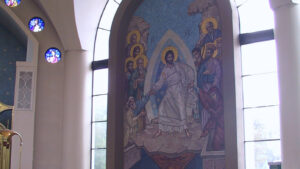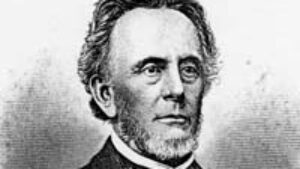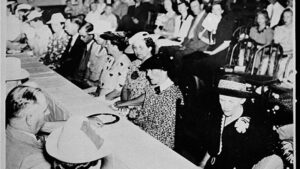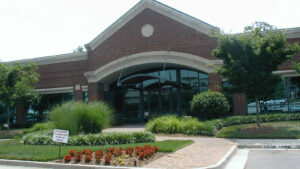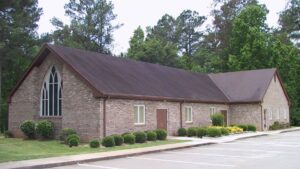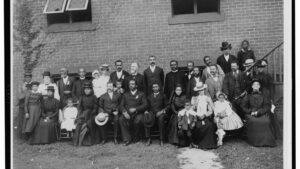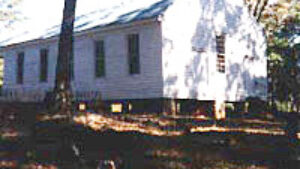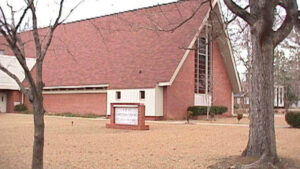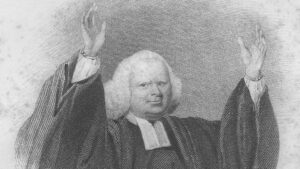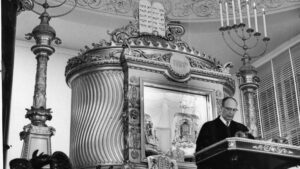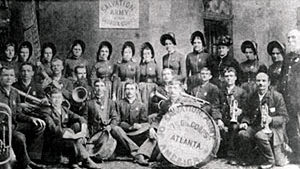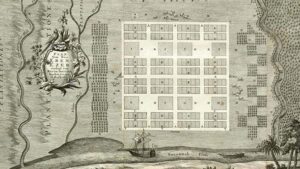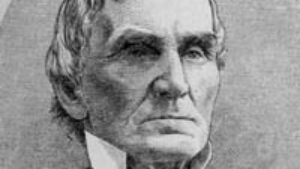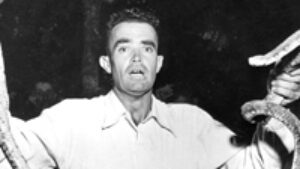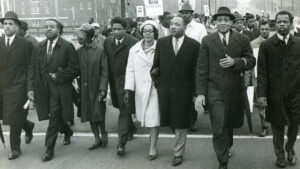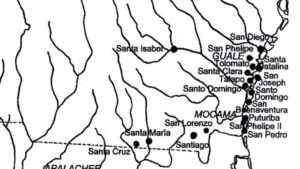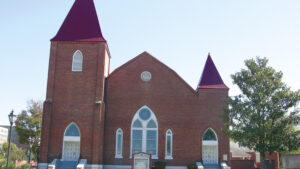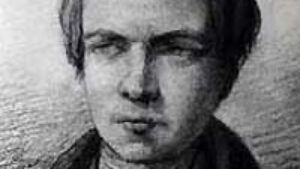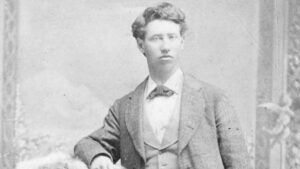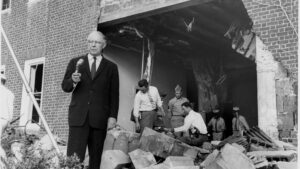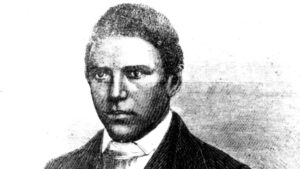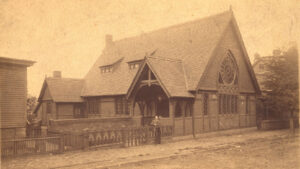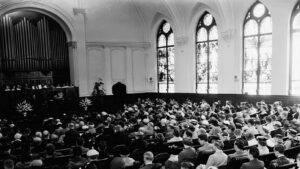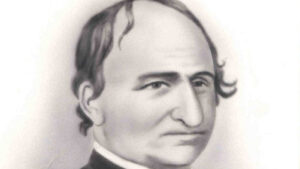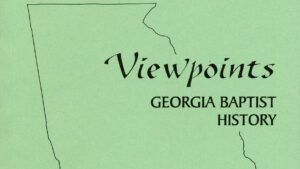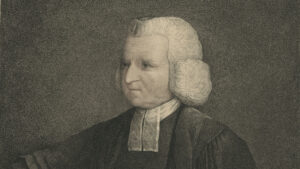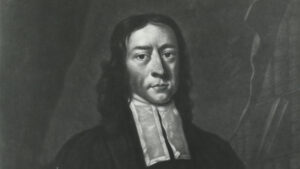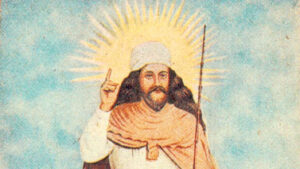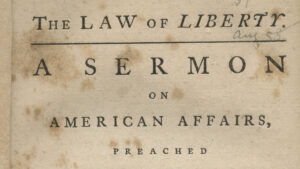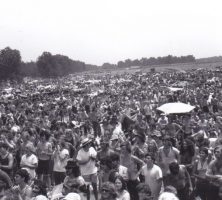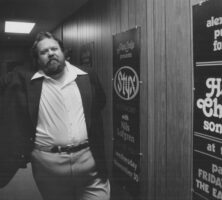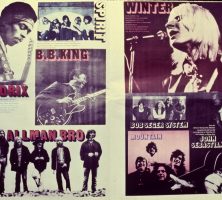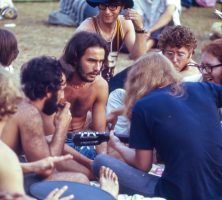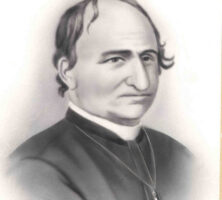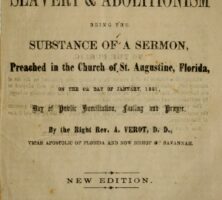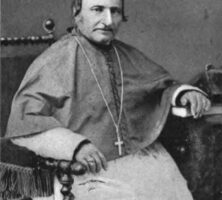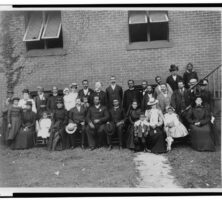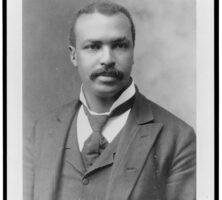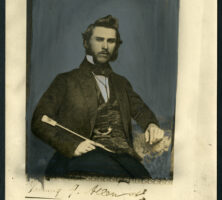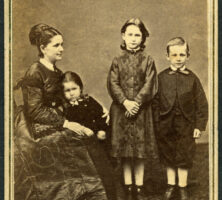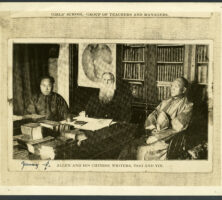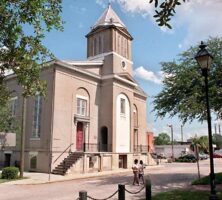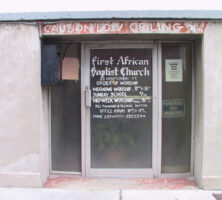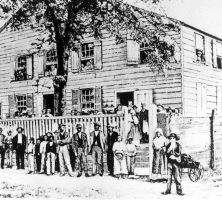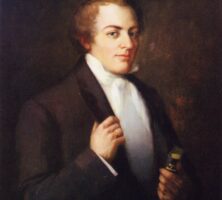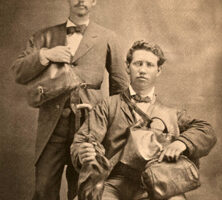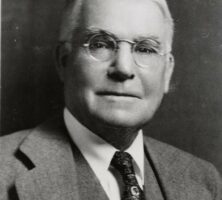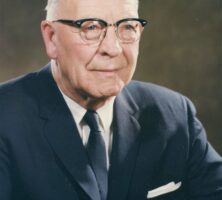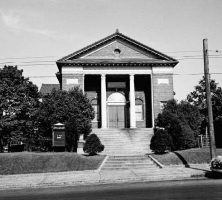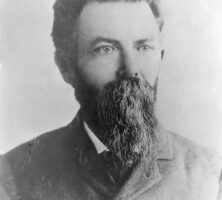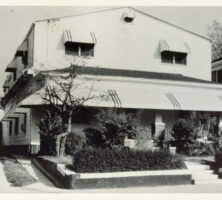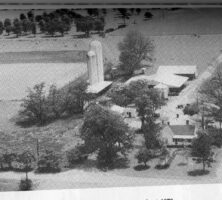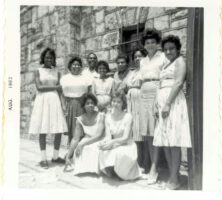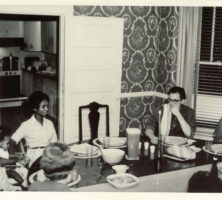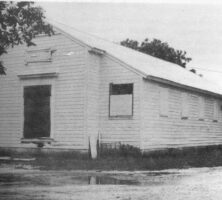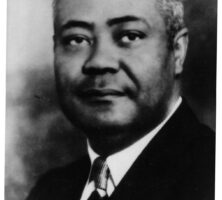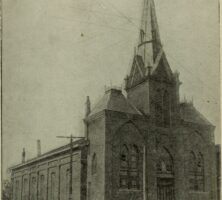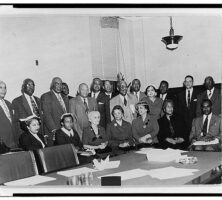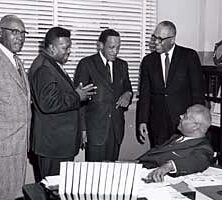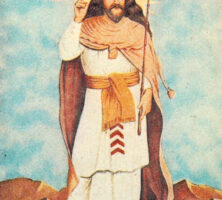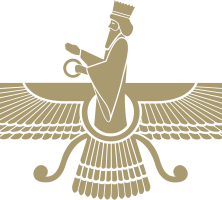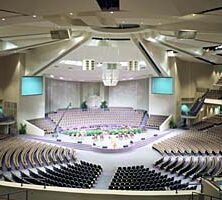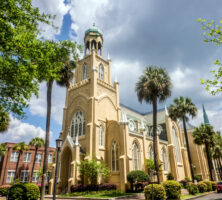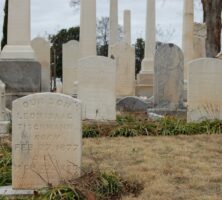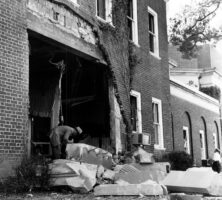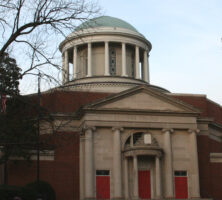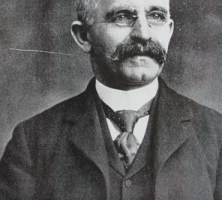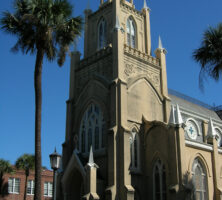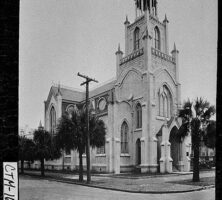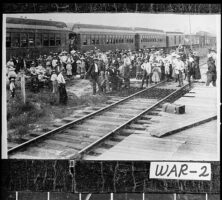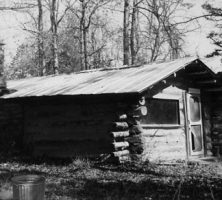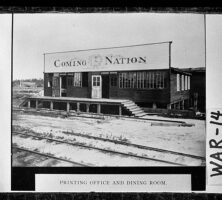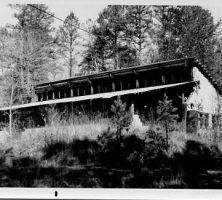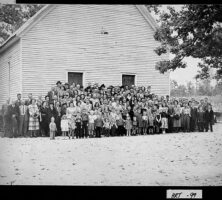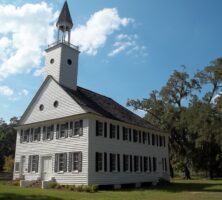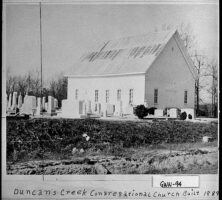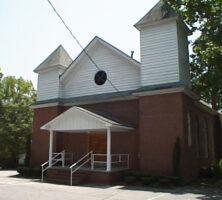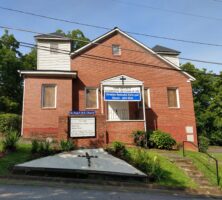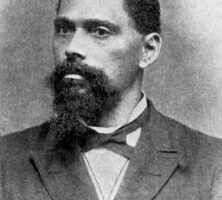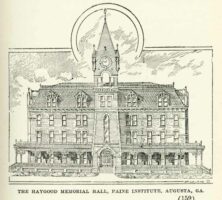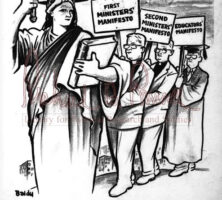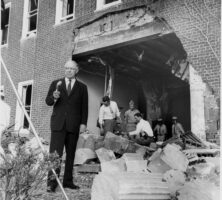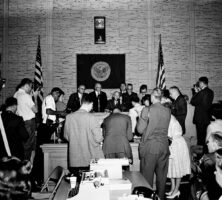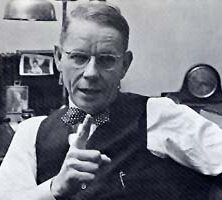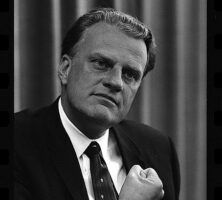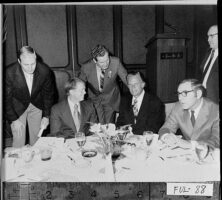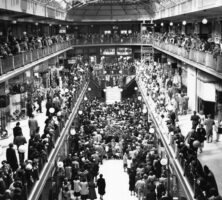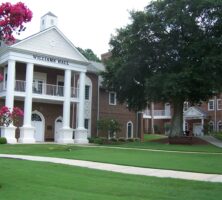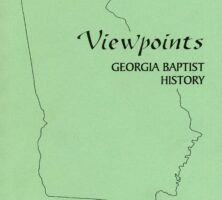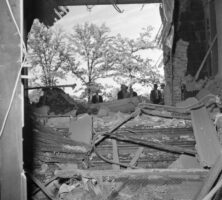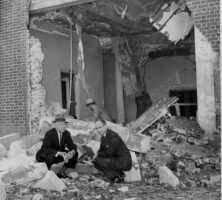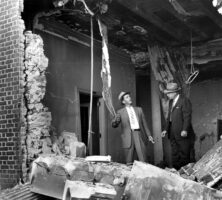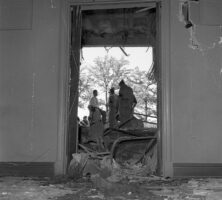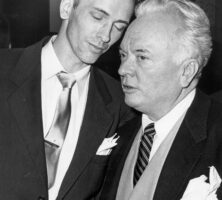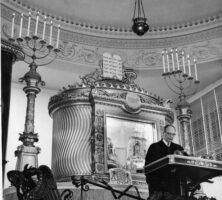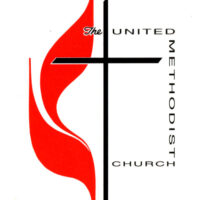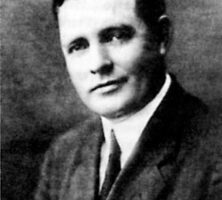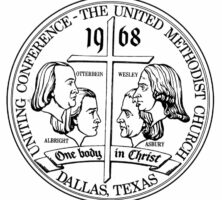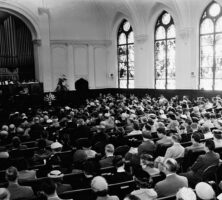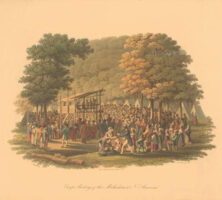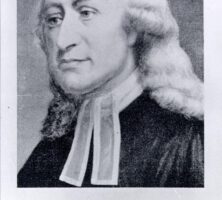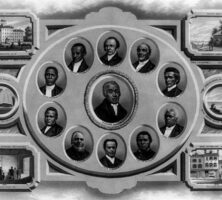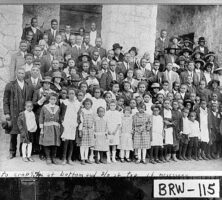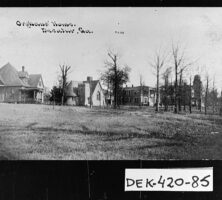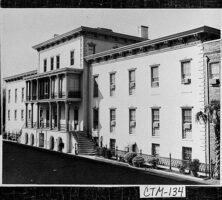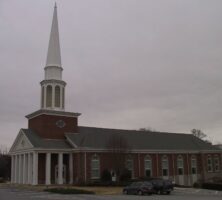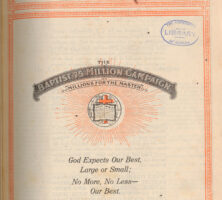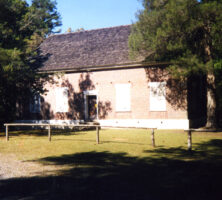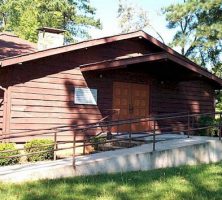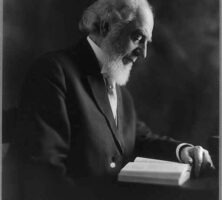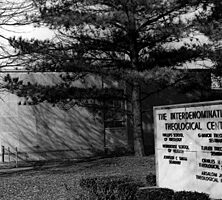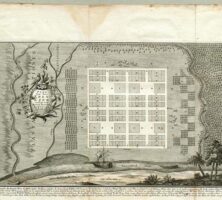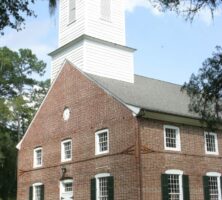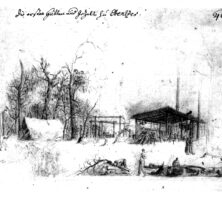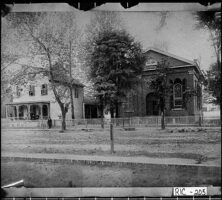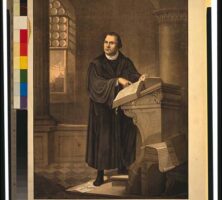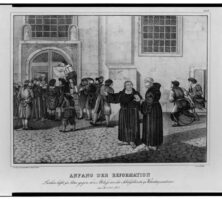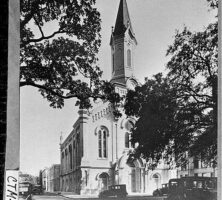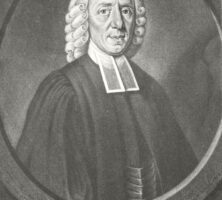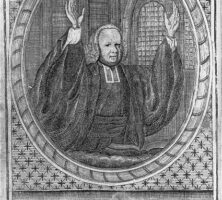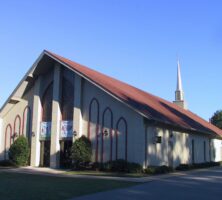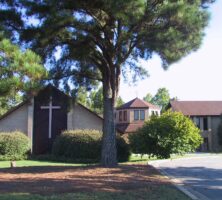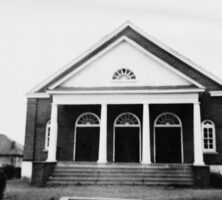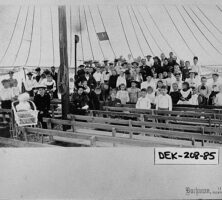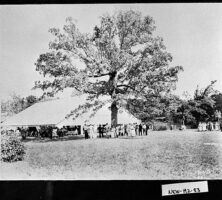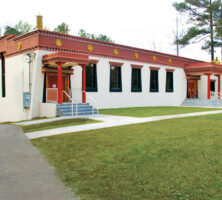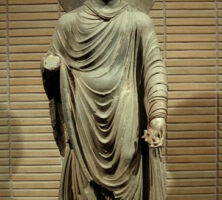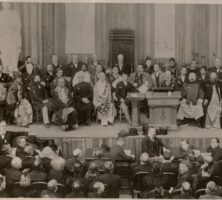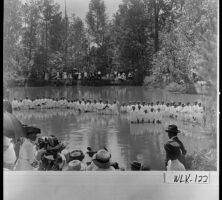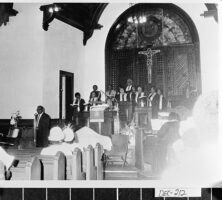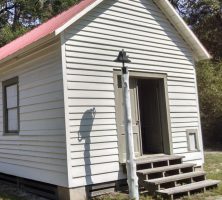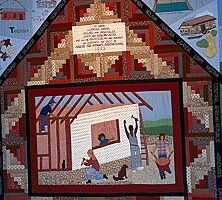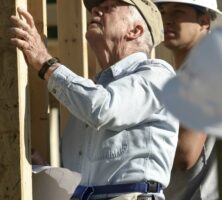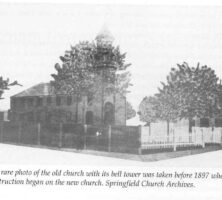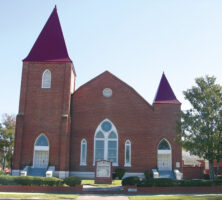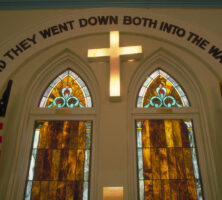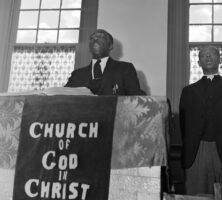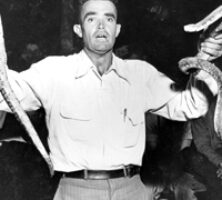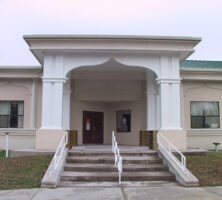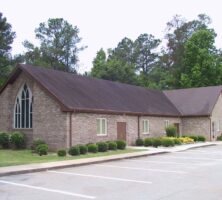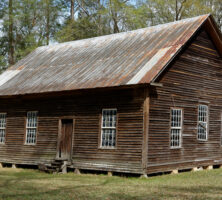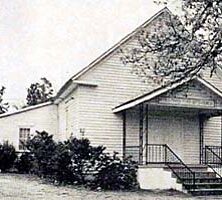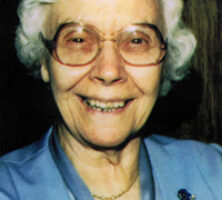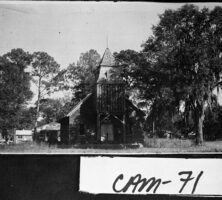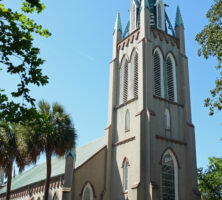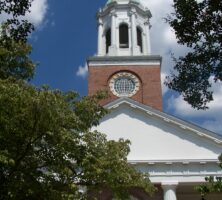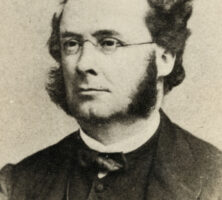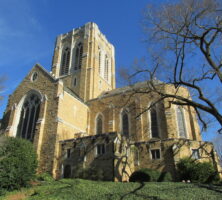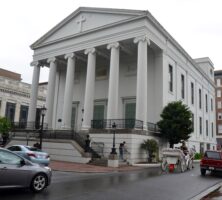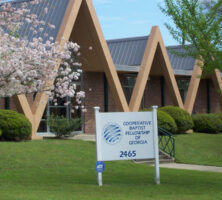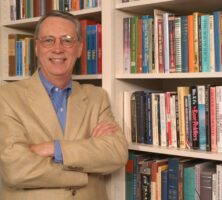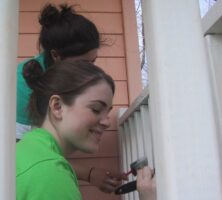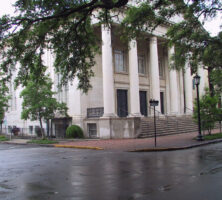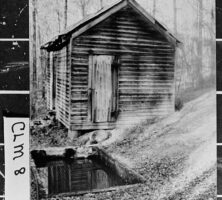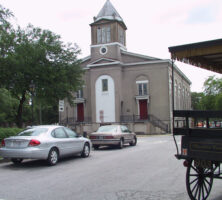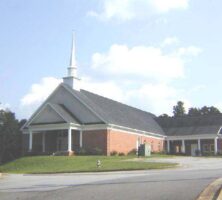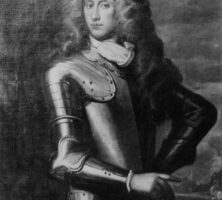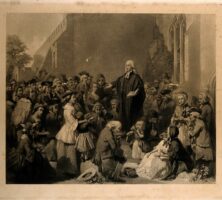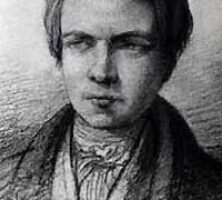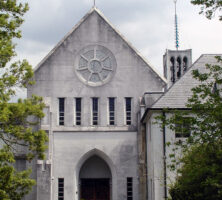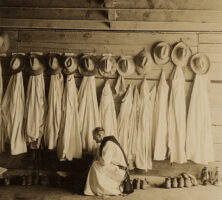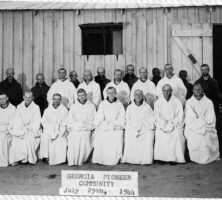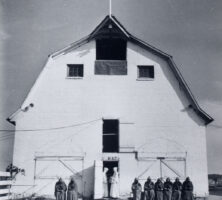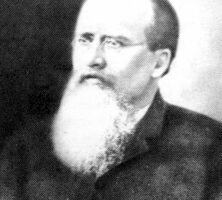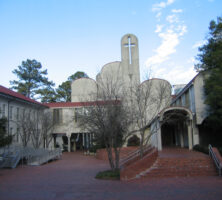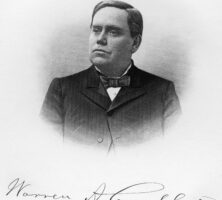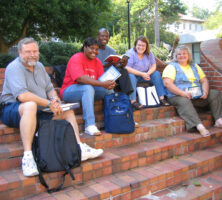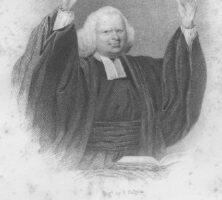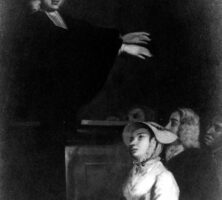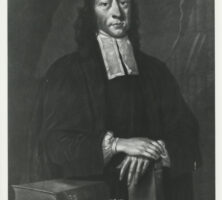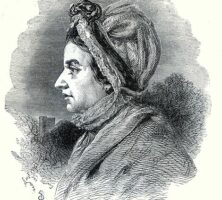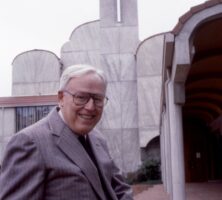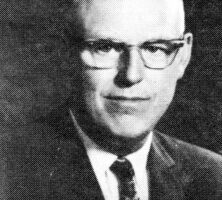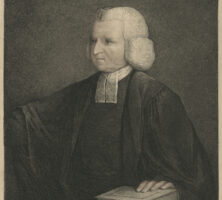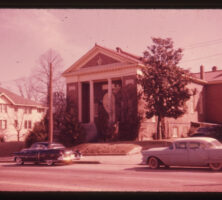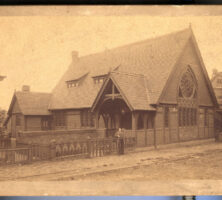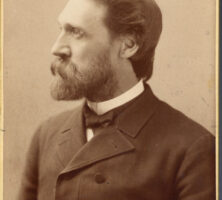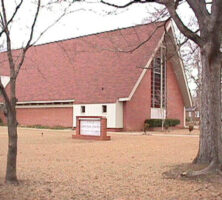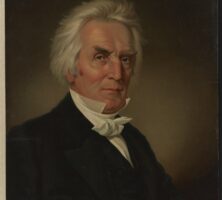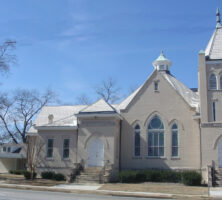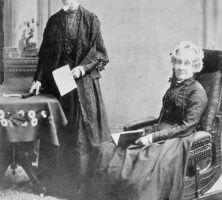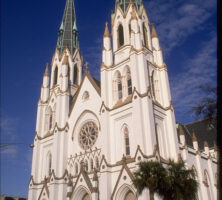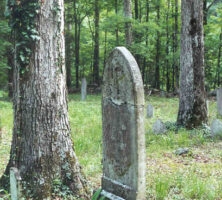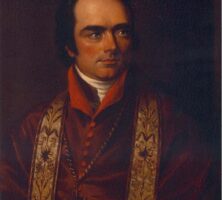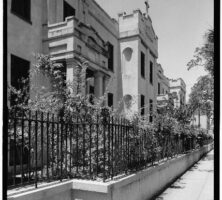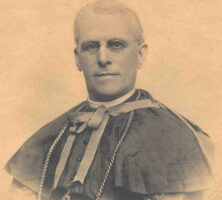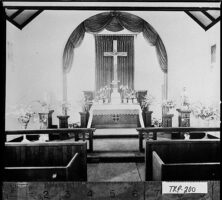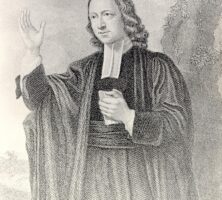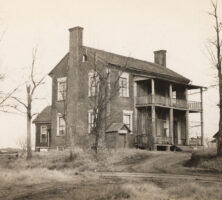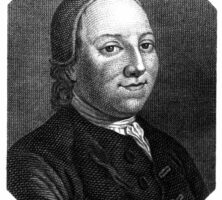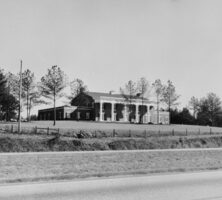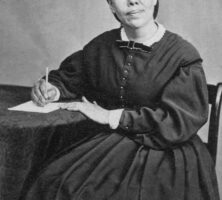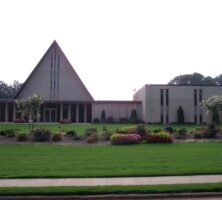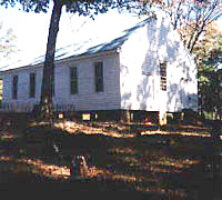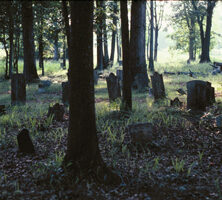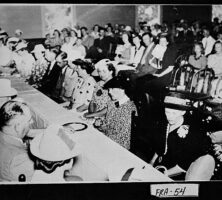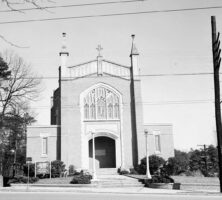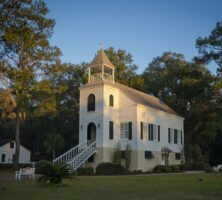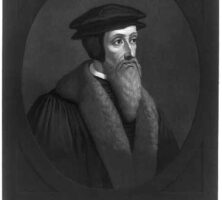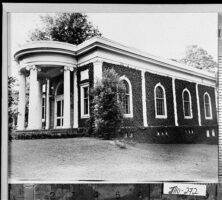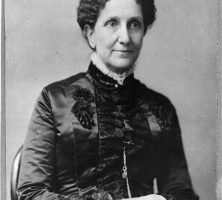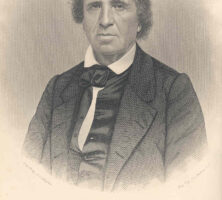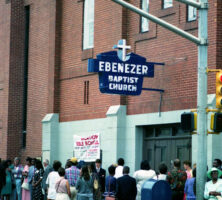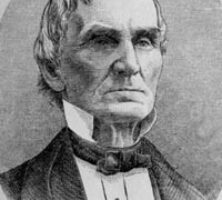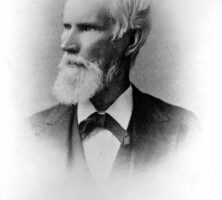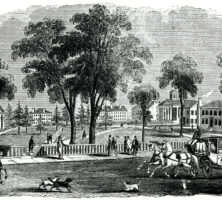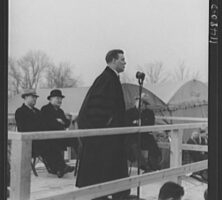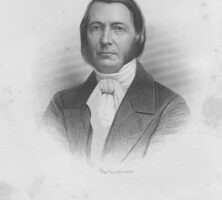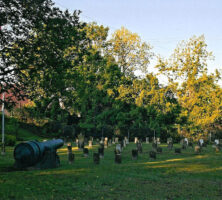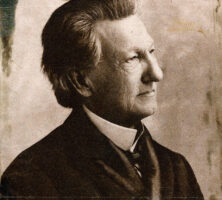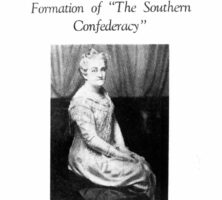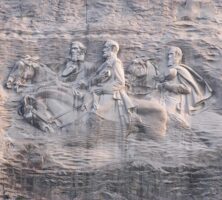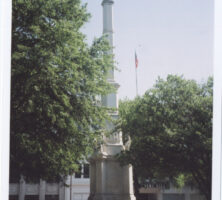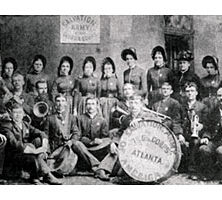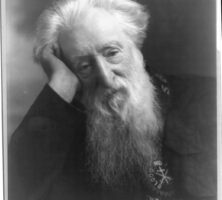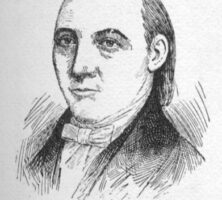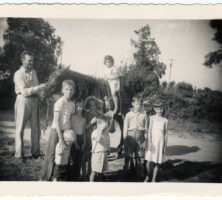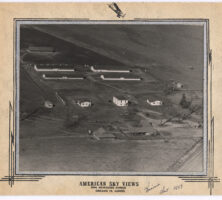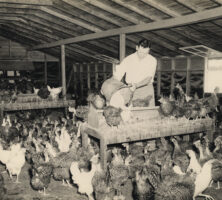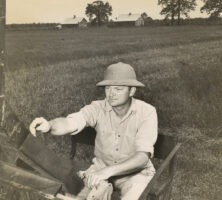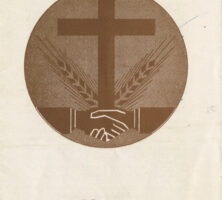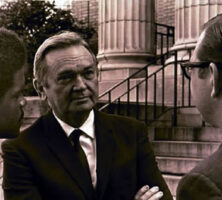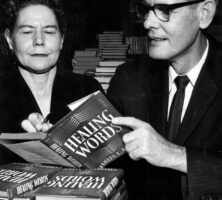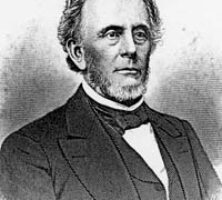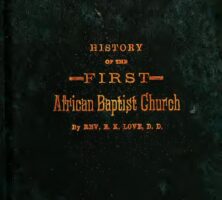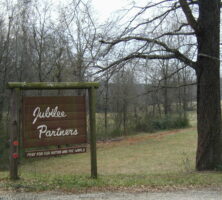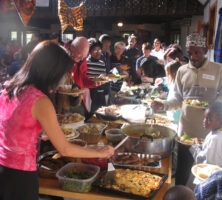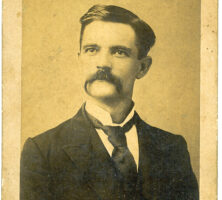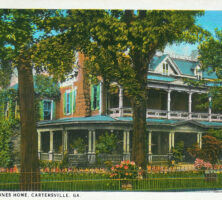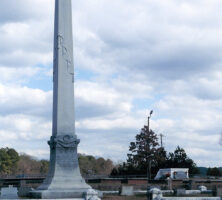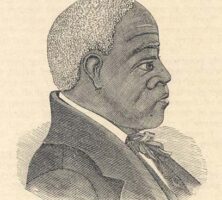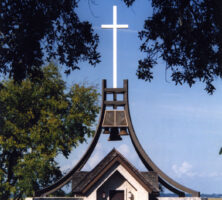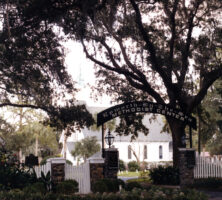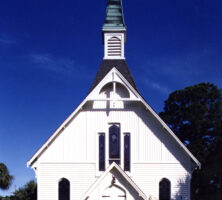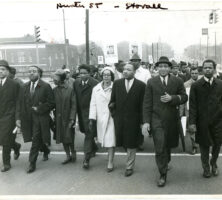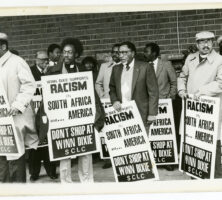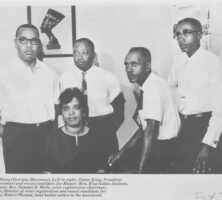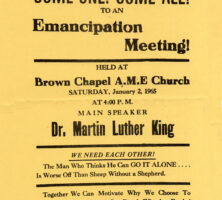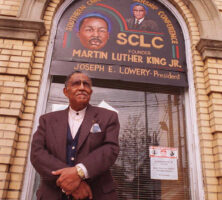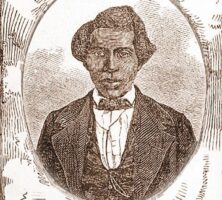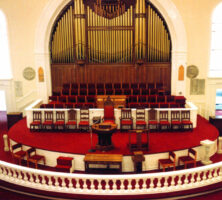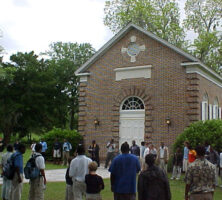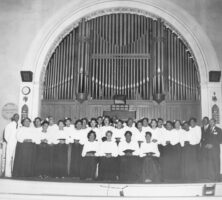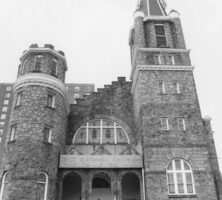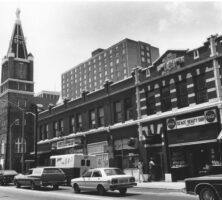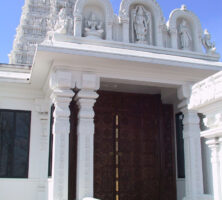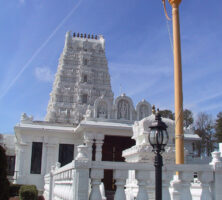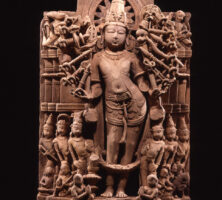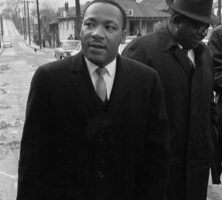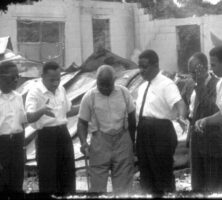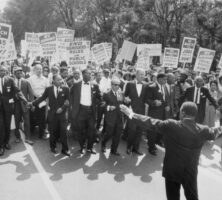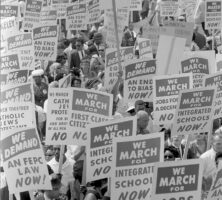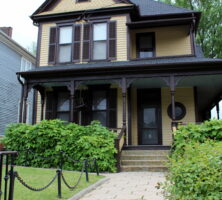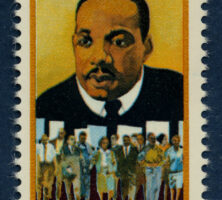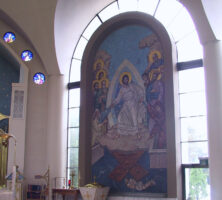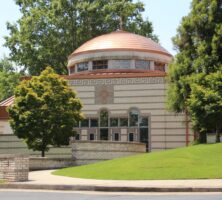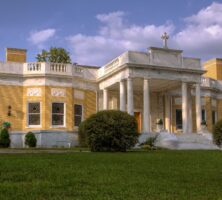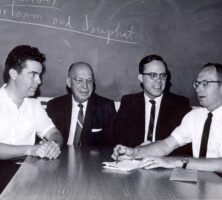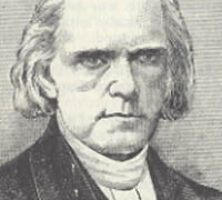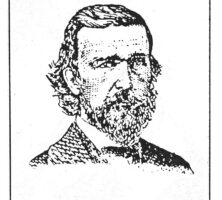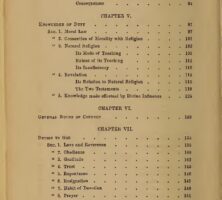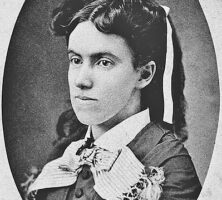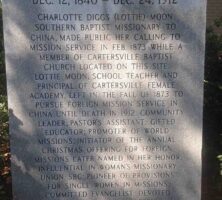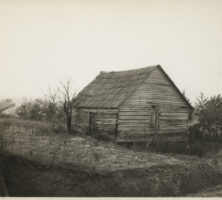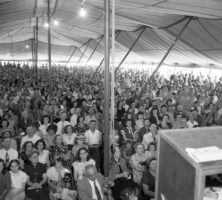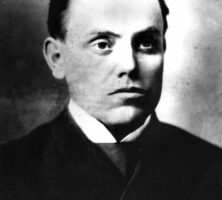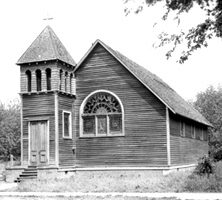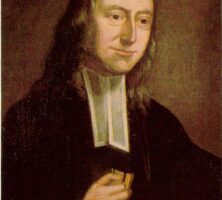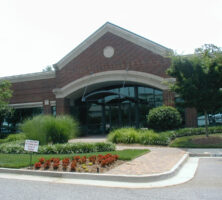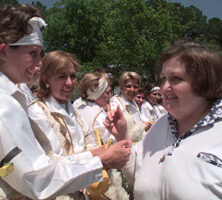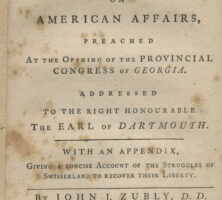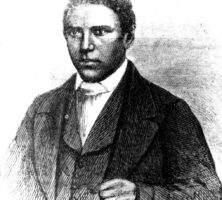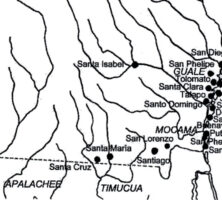The New Georgia Encyclopedia is supported by funding from A More Perfect Union, a special initiative of the National Endowment for the Humanities.
Organizers of the second Atlanta International Pop Festival initially required tickets to enter the gated festival, shown here on opening day, July 3, 1970. However, unruly crowds soon prompted the organizers to allow free entry.
Photograph by Earl McGehee
The New Georgia Encyclopedia does not hold the copyright for this media resource and can neither grant nor deny permission to republish or reproduce the image online or in print. All requests for permission to publish or reproduce the resource must be submitted to the rights holder.
The crowd at the second Atlanta International Pop Festival in Byron. Estimates vary, but the festival likely attracted between 200,000 and 300,000 people.
Courtesy of Atlanta Journal-Constitution.
The New Georgia Encyclopedia does not hold the copyright for this media resource and can neither grant nor deny permission to republish or reproduce the image online or in print. All requests for permission to publish or reproduce the resource must be submitted to the Atlanta Journal-Constitution.
Alex Cooley, pictured in 1978, owned and operated a number of the best-known rock venues in Atlanta, including Alex Cooley's Electric Ballroom and the Tabernacle. In 1987 Cooley was inducted as a nonperformer into the Georgia Music Hall of Fame.
Courtesy of Atlanta Journal-Constitution.
The New Georgia Encyclopedia does not hold the copyright for this media resource and can neither grant nor deny permission to republish or reproduce the image online or in print. All requests for permission to publish or reproduce the resource must be submitted to the Atlanta Journal-Constitution.
This homemade blacklight poster is designed after the 1970 cover of the Second Annual Atlanta International Pop Festival newspaper.
Photograph by Earl McGehee
The New Georgia Encyclopedia does not hold the copyright for this media resource and can neither grant nor deny permission to republish or reproduce the image online or in print. All requests for permission to publish or reproduce the resource must be submitted to the rights holder.
This centerfold from the second Atlanta International Pop Festival program showcases artists including Jimi Hendrix, B.B. King, and The Allman Brothers Band.
Photograph by Earl McGehee
The New Georgia Encyclopedia does not hold the copyright for this media resource and can neither grant nor deny permission to republish or reproduce the image online or in print. All requests for permission to publish or reproduce the resource must be submitted to the rights holder.
The second Atlanta International Pop Festival took place July 3-5, 1970, in Byron.
Photograph by Earl McGehee
The New Georgia Encyclopedia does not hold the copyright for this media resource and can neither grant nor deny permission to republish or reproduce the image online or in print. All requests for permission to publish or reproduce the resource must be submitted to the rights holder.
Scorching temperatures and high winds marked the second Atlanta International Pop Festival. Firetrucks were brought in to hose down attendees while medics treated sunburns.
Photograph by Earl McGehee
The New Georgia Encyclopedia does not hold the copyright for this media resource and can neither grant nor deny permission to republish or reproduce the image online or in print. All requests for permission to publish or reproduce the resource must be submitted to the rights holder.
Litter quickly covered the ground at the second Atlanta International Pop Festival in Byron.
Photograph by Earl McGehee
The New Georgia Encyclopedia does not hold the copyright for this media resource and can neither grant nor deny permission to republish or reproduce the image online or in print. All requests for permission to publish or reproduce the resource must be submitted to the rights holder.
Augustin Verot, known as the "Rebel Bishop" for his support of the Confederacy during the Civil War, became bishop of the Diocese of Savannah in 1861 and led the Catholic community through the turbulent years of war and Reconstruction.
Courtesy of Catholic Diocese of Savannah Archives
The New Georgia Encyclopedia does not hold the copyright for this media resource and can neither grant nor deny permission to republish or reproduce the image online or in print. All requests for permission to publish or reproduce the resource must be submitted to the rights holder.
On January 4, 1861 Augustin Verot delivered a sermon defending the practice of slavery and condemning abolitionism. It was later reprinted as a Confederate tract and circulated throughout the region, earning Verot wide acclaim in southern states.
The New Georgia Encyclopedia does not hold the copyright for this media resource and can neither grant nor deny permission to republish or reproduce the image online or in print. All requests for permission to publish or reproduce the resource must be submitted to the rights holder.
In the aftermath of the Civil War, Augustin Verot called for Catholic bishops to support the construction of schools and churches for freedmen.
The New Georgia Encyclopedia does not hold the copyright for this media resource and can neither grant nor deny permission to republish or reproduce the image online or in print. All requests for permission to publish or reproduce the resource must be submitted to the rights holder.
Members of the First Congregational Church, including the Reverend Henry Hugh Proctor (standing seventh from left), in Atlanta are pictured circa 1899. Today the church is an affiliate of the United Church of Christ, which formed in 1957.
Courtesy of Library of Congress, Prints and Photographs Division
The New Georgia Encyclopedia does not hold the copyright for this media resource and can neither grant nor deny permission to republish or reproduce the image online or in print. All requests for permission to publish or reproduce the resource must be submitted to the rights holder.
Henry Hugh Proctor, the minister at First Congregational Church in Atlanta from 1894 until 1920, is pictured circa 1900. In 1910 Proctor founded the Atlanta Colored Music Festival Association, which produced annual concerts by classically trained African American performers for nearly a decade.
Courtesy of Library of Congress, Prints and Photographs Division
The New Georgia Encyclopedia does not hold the copyright for this media resource and can neither grant nor deny permission to republish or reproduce the image online or in print. All requests for permission to publish or reproduce the resource must be submitted to the rights holder.
Young John Allen, born in Burke County and raised in Meriwether County, traveled as a Methodist missionary to Shanghai, China, in 1860 and remained there for much of his life. In addition to his ministry, Allen worked as a journalist and founded a college in Shanghai.
The New Georgia Encyclopedia does not hold the copyright for this media resource and can neither grant nor deny permission to republish or reproduce the image online or in print. For more information about this resource, contact the Stuart A. Rose Manuscript, Archives, and Rare Book Library at Emory University.
Mary Houston Allen, the wife of Young John Allen, a Methodist missionary to China, is pictured with her children, circa 1870. Before her marriage, Allen attended Wesleyan College in Macon.
The New Georgia Encyclopedia does not hold the copyright for this media resource and can neither grant nor deny permission to republish or reproduce the image online or in print. For more information about this resource, contact the Stuart A. Rose Manuscript, Archives, and Rare Book Library at Emory University.
Young John Allen (center), a Georgia native and Methodist missionary to Shanghai, China, is pictured with two Chinese writers, identified as Tsai and Yin, circa 1900. During his many decades in China, Allen founded the publication (Church News) and translated books.
The New Georgia Encyclopedia does not hold the copyright for this media resource and can neither grant nor deny permission to republish or reproduce the image online or in print. For more information about this resource, contact the Stuart A. Rose Manuscript, Archives, and Rare Book Library at Emory University.
First African Baptist Church, which was established during the 1770s, played an important part in the Savannah civil rights movement. The stained-glass windows in the current church building, located at 23 Montgomery Street in Savannah, feature prominent Black leaders.
Photograph by Carl Elmore. Courtesy of Savannah Morning News
The New Georgia Encyclopedia does not hold the copyright for this media resource and can neither grant nor deny permission to republish or reproduce the image online or in print. All requests for permission to publish or reproduce the resource must be submitted to the rights holder.
A museum housing artifacts and church memorabilia dating to the eighteenth century is housed on the grounds of First African Baptist Church in Savannah. One of the oldest Black churches in the nation, First African has occupied its current site on Montgomery Street since 1859.
Photograph by Sarah E. McKee, New Georgia Encyclopedia
The New Georgia Encyclopedia does not hold the copyright for this media resource and can neither grant nor deny permission to republish or reproduce the image online or in print. All requests for permission to publish or reproduce the resource must be submitted to the rights holder.
This post-Civil War sketch depicts members of Savannah's First Bryan Baptist Church, named after early Baptist minister Andrew Bryan, congregating outside the church building. The church is one of the oldest Black churches in North America.
Photograph by James M. Simms
The New Georgia Encyclopedia does not hold the copyright for this media resource and can neither grant nor deny permission to republish or reproduce the image online or in print. All requests for permission to publish or reproduce the resource must be submitted to the rights holder.
Joseph Smith founded the Church of Jesus Christ of Latter-day Saints in 1830. Adherents of the church, known as Mormons, sent missionaries to Georgia first in the 1840s, and then again after the Civil War (1861-65).
Courtesy of the Church Archives, the Church of Jesus Christ of Latter-day Saints
The New Georgia Encyclopedia does not hold the copyright for this media resource and can neither grant nor deny permission to republish or reproduce the image online or in print. All requests for permission to publish or reproduce the resource must be submitted to the rights holder.
Mormon missionaries Rudger Clawson (left) and Joseph Standing are pictured in 1878. In 1879 Standing was killed by a mob in Whitfield County as he and Clawson were traveling to a church conference in Chattooga County.
Image from Church History Library
The New Georgia Encyclopedia does not hold the copyright for this media resource and can neither grant nor deny permission to republish or reproduce the image online or in print. All requests for permission to publish or reproduce the resource must be submitted to the rights holder.
Charles Callis directed the Southern States Mission of the Church of Jesus Christ of Latter-day Saints in Atlanta from 1919 to early 1934, when he left for Salt Lake City, Utah, to fulfull his 1933 calling to be one of the church's Quorum of Twelve Apostles.
Photograph by American Foto News. Courtesy of the Church Archives, the Church of Jesus Christ of Latter-day Saints
The New Georgia Encyclopedia does not hold the copyright for this media resource and can neither grant nor deny permission to republish or reproduce the image online or in print. All requests for permission to publish or reproduce the resource must be submitted to the rights holder.
LeGrand Richards succeeded Charles Callis in 1934 as the president of the Southern States Mission of the Church of Jesus Christ of Latter-day Saints in Atlanta.
Courtesy of the Church Archives, the Church of Jesus Christ of Latter-day Saints
The New Georgia Encyclopedia does not hold the copyright for this media resource and can neither grant nor deny permission to republish or reproduce the image online or in print. All requests for permission to publish or reproduce the resource must be submitted to the rights holder.
The Atlanta Georgia Temple, pictured circa 2009 and located in Sandy Springs, was the first Mormon temple erected in the South. Georgia governor George Busbee spoke at the building's groundbreaking in 1981, and the facility was dedicated two years later.
Photograph by Ray Luce
The New Georgia Encyclopedia does not hold the copyright for this media resource and can neither grant nor deny permission to republish or reproduce the image online or in print. All requests for permission to publish or reproduce the resource must be submitted to the rights holder.
A chapel of the Church of Jesus Christ of Latter-day Saints, pictured in 1952, was erected in Atlanta at the corner of Boulevard and North Avenue in 1925. The building served both as a meeting house and as the office for the Southern States Mission.
The New Georgia Encyclopedia does not hold the copyright for this media resource and can neither grant nor deny permission to republish or reproduce the image online or in print. Requests for permission to publish or reproduce the resource should be submitted to Special Collections and Archives at Georgia State University.
John Morgan, pictured in 1890, arrived in Georgia as a missionary of the Church of Jesus Christ of Latter-day Saints in 1876. Two years later he was given authority over the church's Southern States Mission, headquarterd in Rome.
Courtesy of Special Collections Department, J. Willard Marriott Library, University of Utah
The New Georgia Encyclopedia does not hold the copyright for this media resource and can neither grant nor deny permission to republish or reproduce the image online or in print. All requests for permission to publish or reproduce the resource must be submitted to the rights holder.
Joseph Standing was sent as a Mormon missionary to Georgia in 1878. The following year he was killed by a mob in Whitfield County while traveling with fellow missionary Rudger Clawson. A memorial park at the murder site was dedicated to Standing in 1952.
Courtesy of Special Collections Department, J. Willard Marriott Library, University of Utah
The New Georgia Encyclopedia does not hold the copyright for this media resource and can neither grant nor deny permission to republish or reproduce the image online or in print. All requests for permission to publish or reproduce the resource must be submitted to the rights holder.
The Mennonite House, pictured in 1962, was located on Houston Street in Atlanta and served as a residence and headquarters for Mennonites active in the civil rights movement. The house was established by Vincent Harding, a Mennonite minister, and his wife, Rosemarie.
Reprinted by permission of Mennonite Church USA Historical Committee
The New Georgia Encyclopedia does not hold the copyright for this media resource and can neither grant nor deny permission to republish or reproduce the image online or in print. All requests for permission to publish or reproduce the resource must be submitted to the rights holder.
Menno L. Yoder's farm in Macon County, pictured circa 1970, is one of the farms comprising the Mennonite community in Montezuma. Mennonites maintain a rural, communal lifestyle, often choosing to limit the use of modern technology, dress, and entertainment.
Photograph from The Amish Mennonites of Macon County, Georgia, by E. S. Yoder
The New Georgia Encyclopedia does not hold the copyright for this media resource and can neither grant nor deny permission to republish or reproduce the image online or in print. All requests for permission to publish or reproduce the resource must be submitted to the rights holder.
An interracial Mennonite Bible school teaching team poses in Atlanta in 1963. These volunteers were part of a project sponsored in Atlanta by the Mennonite Central Commitee, which sent minister Vincent Harding to organize desegregation efforts in the South.
Reprinted by permission of Mennonite Church USA Historical Committee
The New Georgia Encyclopedia does not hold the copyright for this media resource and can neither grant nor deny permission to republish or reproduce the image online or in print. All requests for permission to publish or reproduce the resource must be submitted to the rights holder.
Residents of the Mennonite House, a center of civil rights activity in Atlanta from 1961 to 1964, gather around the "black and white table." The table, built in 1962 by Mennonites Vincent Harding and Bill Cooper, was made of light maple and dark mahogany or cherry, symbolizing racial unity.
Reprinted by permission of Mennonite Church USA Historical Committee
The New Georgia Encyclopedia does not hold the copyright for this media resource and can neither grant nor deny permission to republish or reproduce the image online or in print. All requests for permission to publish or reproduce the resource must be submitted to the rights holder.
The first meetinghouse used by the Mennonite community in Montezuma is pictured in 1981. The community was established in 1953 and today supports three schools and three churches.
Photograph from The Amish Mennonites of Macon County, Georgia, by E. S. Yoder
The New Georgia Encyclopedia does not hold the copyright for this media resource and can neither grant nor deny permission to republish or reproduce the image online or in print. All requests for permission to publish or reproduce the resource must be submitted to the rights holder.
The Reverend William Holmes Borders served as pastor of Wheat Street Baptist Church in Atlanta from 1937 to 1988. In the late 1950s he led the Love, Law, and Liberation Movement to desegregate the city's bus system, and in the 1960s he arranged for the construction of a low-income housing project, Wheat Street Gardens.
Courtesy of Wheat Street Baptist Church; Estate of the Reverend William Holmes Borders Sr.
The New Georgia Encyclopedia does not hold the copyright for this media resource and can neither grant nor deny permission to republish or reproduce the image online or in print. All requests for permission to publish or reproduce the resource must be submitted to the rights holder.
Wheat Street Baptist Church, located in the Sweet Auburn district of Atlanta, was founded in 1869. The church building, located at the corner of Auburn Avenue and Yonge Street (later William Holmes Borders Drive), was constructed between 1921 and 1939. William Holmes Borders, a prominent civil rights activist, was pastor of the church from 1937 to 1988.
From The United Negro: His Problems and His Progress: Containing the Addresses and Proceedings the Negro Young People's Christian and Educational Congress, Held August 6-11, 1902, by Irvine Garland Penn and John W. E. Bowen Sr.
The New Georgia Encyclopedia does not hold the copyright for this media resource and can neither grant nor deny permission to republish or reproduce the image online or in print. All requests for permission to publish or reproduce the resource must be submitted to the rights holder.
Members of the National Association for the Advancement of Colored People gather in February 1957 for civil rights hearings held before the U.S. Senate in Washington, D.C. Prominent leaders from Georgia include A. T. Walden (second row, fourth from left) and the Reverend William Holmes Borders (second row, fifth from left).
Courtesy of Library of Congress, Prints and Photographs Division, Visual Materials from the National Association for the Advancement of Colored People Records, #LC-USZ62-126520.
The New Georgia Encyclopedia does not hold the copyright for this media resource and can neither grant nor deny permission to republish or reproduce the image online or in print. All requests for permission to publish or reproduce the resource must be submitted to the rights holder.
Leaders of the movement to desegregate the bus system in Atlanta gather in the office of Rev. William Holmes Borders (seated) at Wheat Street Baptist Church. From left, Rev. R. B. Shorts, Rev. R. Joseph Johnson, Rev. Howard T. Bussey, and Rev. Ray Williams.
Courtesy of Wheat Street Baptist Church; Estate of the Reverend William Holmes Borders Sr.
The New Georgia Encyclopedia does not hold the copyright for this media resource and can neither grant nor deny permission to republish or reproduce the image online or in print. All requests for permission to publish or reproduce the resource must be submitted to the rights holder.
The teachings of the prophet Zarathushtra, also known as Zoroaster, form the basis for the ancient monotheistic religion Zoroastrianism. Zarathushtra is thought by most scholars to have lived in what is now Iran sometime between 1500 and 1000 B.C. An active Zoroastrian community has existed in Atlanta since the early 1990s.
Courtesy of Alliance of Religions and Conservation
The New Georgia Encyclopedia does not hold the copyright for this media resource and can neither grant nor deny permission to republish or reproduce the image online or in print. All requests for permission to publish or reproduce the resource must be submitted to the rights holder.
The faravahar, a prominent motif in Middle Eastern art, functions as a symbol of the Zoroastrian faith. Interpretations of the symbol vary. Zoroastrianism is an ancient religion practiced around the world, with approximately 250 adherents in Georgia as of 2007.
Image from Wikimedia
The New Georgia Encyclopedia does not hold the copyright for this media resource and can neither grant nor deny permission to republish or reproduce the image online or in print. All requests for permission to publish or reproduce the resource must be submitted to the rights holder.
The main sanctuary of New Birth Missionary Baptist Church, a megachurch in Atlanta, holds 7,500 people. The use of state-of-the-art technology, including lighting, sound systems, and wide-screen video monitors, is a hallmark of the worship experience in many megachurches.
Courtesy of the Sizemore Group, the Architects
The New Georgia Encyclopedia does not hold the copyright for this media resource and can neither grant nor deny permission to republish or reproduce the image online or in print. All requests for permission to publish or reproduce the resource must be submitted to the rights holder.
The New Georgia Encyclopedia does not hold the copyright for this media resource and can neither grant nor deny permission to republish or reproduce the image online or in print. All requests for permission to publish or reproduce the resource must be submitted to the rights holder.
Savannah Christian Church, a megachurch in Savannah, operates a bookstore on the church campus. Many megachurches offer a variety of services and facilities to their members, including bookstores, gymnasiums, information centers, and shuttle services.
Courtesy of Savannah Christian Church
The New Georgia Encyclopedia does not hold the copyright for this media resource and can neither grant nor deny permission to republish or reproduce the image online or in print. All requests for permission to publish or reproduce the resource must be submitted to the rights holder.
Congregation Mickve Israel in Savannah is the oldest Jewish congregation in the South and the third oldest in the United States. The congregation was founded during the establishment of the colony in 1733, and the current temple building was completed in 1878.
Photograph by Mark Kortum
The New Georgia Encyclopedia does not hold the copyright for this media resource and can neither grant nor deny permission to republish or reproduce the image online or in print. All requests for permission to publish or reproduce the resource must be submitted to the rights holder.
The New Georgia Encyclopedia does not hold the copyright for this media resource and can neither grant nor deny permission to republish or reproduce the image online or in print. All requests for permission to publish or reproduce the resource must be submitted to the rights holder.
The Jewish section of Oakland Cemetery in Atlanta is included in a database of cemeteries and burial sites compiled by the Jewish Cemetery Association of Georgia. The association was founded by volunteers at the William Breman Jewish Heritage Museum in Atlanta.
Photograph by Kate Wrightson
The New Georgia Encyclopedia does not hold the copyright for this media resource and can neither grant nor deny permission to republish or reproduce the image online or in print. All requests for permission to publish or reproduce the resource must be submitted to the rights holder.
During the antebellum period in Atlanta, most Jews supported the Confederacy, including David Mayer. Mayer served as Governor Joseph E. Brown's commissary officer, and later became a founding and longtime member of Atlanta's school board.
The New Georgia Encyclopedia does not hold the copyright for this media resource and can neither grant nor deny permission to republish or reproduce the image online or in print. All requests for permission to publish or reproduce the resource must be submitted to the William Breman Jewish Heritage Museum.
Detectives investigate the damage at the side entrance of the Hebrew Benevolent Congregation, commonly known as "the Temple," in Atlanta. The Temple was bombed on October 12, 1958, probably in response to the civil rights activism of the congregation's rabbi, Jacob Rothschild.
Courtesy of Atlanta Journal-Constitution.
The New Georgia Encyclopedia does not hold the copyright for this media resource and can neither grant nor deny permission to republish or reproduce the image online or in print. All requests for permission to publish or reproduce the resource must be submitted to the Atlanta Journal-Constitution.
The New Georgia Encyclopedia does not hold the copyright for this media resource and can neither grant nor deny permission to republish or reproduce the image online or in print. All requests for permission to publish or reproduce the resource must be submitted to the rights holder.
The Hebrew Benevolent Congregation, which first organized in 1860 as the Hebrew Benevolent Society, began construction in 1875 on a synagogue in Atlanta. The Temple, as it came to be known, continues to serve the Jewish community in the city.
Photograph by David
The New Georgia Encyclopedia does not hold the copyright for this media resource and can neither grant nor deny permission to republish or reproduce the image online or in print. All requests for permission to publish or reproduce the resource must be submitted to the rights holder.
The New Georgia Encyclopedia does not hold the copyright for this media resource and can neither grant nor deny permission to republish or reproduce the image online or in print. All requests for permission to publish or reproduce the resource must be submitted to the rights holder.
Herman Myers, a prominent member of the Jewish community in Savannah, was mayor of that city during the 1890s.
Photograph by Wikimedia
The New Georgia Encyclopedia does not hold the copyright for this media resource and can neither grant nor deny permission to republish or reproduce the image online or in print. All requests for permission to publish or reproduce the resource must be submitted to the rights holder.
The New Georgia Encyclopedia does not hold the copyright for this media resource and can neither grant nor deny permission to republish or reproduce the image online or in print. All requests for permission to publish or reproduce the resource must be submitted to the rights holder.
The New Georgia Encyclopedia does not hold the copyright for this media resource and can neither grant nor deny permission to republish or reproduce the image online or in print. All requests for permission to publish or reproduce the resource must be submitted to the rights holder.
Congregation Mickve Israel, founded in 1733, is the oldest Jewish congregation in the South. The current synagogue, erected in Savannah between 1876 and 1878, is designed in the Gothic style and features a museum documenting the congregation's history.
Photograph by Kelly Caudle, New Georgia Encyclopedia
The New Georgia Encyclopedia does not hold the copyright for this media resource and can neither grant nor deny permission to republish or reproduce the image online or in print. All requests for permission to publish or reproduce the resource must be submitted to the rights holder.
Congregation Mickve Israel, pictured circa 1930, was built in 1878 on Bull Street, on the east side of Monterey Square. The synagogue is listed on the National Register of Historic Places.
Courtesy of Georgia Archives, Vanishing Georgia, #
ctm162.
The New Georgia Encyclopedia does not hold the copyright for this media resource and can neither grant nor deny permission to republish or reproduce the image online or in print. Requests for permission to publish or reproduce the resource should be submitted to the Georgia Archives.
Former members of the dissolved Ruskin Commonwealth, a utopian community in Dickson County, Tennessee, arrive at the Ware County railroad station in September 1899 to join the Duke Colony, a cooperative farming community located eight miles southwest of Waycross.
Courtesy of Georgia Archives, Vanishing Georgia, #
war002.
The New Georgia Encyclopedia does not hold the copyright for this media resource and can neither grant nor deny permission to republish or reproduce the image online or in print. Requests for permission to publish or reproduce the resource should be submitted to the Georgia Archives.
A cabin built by members of the Macedonia Cooperative Community during the 1940s is pictured in 1975. The community was founded in Habersham County in 1937 and practiced communal living, spiritual searching, and pacifism.
Photograph by W. Edward Orser
The New Georgia Encyclopedia does not hold the copyright for this media resource and can neither grant nor deny permission to republish or reproduce the image online or in print. All requests for permission to publish or reproduce the resource must be submitted to the rights holder.
The printing office for the Coming Nation, the newspaper published by the Ruskin Commonwealth in Ware County, also served as a community dining room. A cooperative farm community, the Ruskin Commonwealth was incorporated in 1899 and disbanded in 1902.
Courtesy of Georgia Archives, Vanishing Georgia, #
war014.
The New Georgia Encyclopedia does not hold the copyright for this media resource and can neither grant nor deny permission to republish or reproduce the image online or in print. Requests for permission to publish or reproduce the resource should be submitted to the Georgia Archives.
The workshop for Community Playthings, a toy and furniture business run by members of the Macedonia Cooperative Community, is pictured in 1975. The Macedonia community, located in Habersham County, was founded in 1937 and disbanded in 1957.
Photograph by W. Edward Orser
The New Georgia Encyclopedia does not hold the copyright for this media resource and can neither grant nor deny permission to republish or reproduce the image online or in print. All requests for permission to publish or reproduce the resource must be submitted to the rights holder.
Members of the Liberty Congregational Church in Hart County gather for a homecoming photograph, circa 1948. The church was likely established around 1878 by Moses Gordon Fleming and continues to be an active congregation.
Courtesy of Georgia Archives, Vanishing Georgia, #
hrt099.
The New Georgia Encyclopedia does not hold the copyright for this media resource and can neither grant nor deny permission to republish or reproduce the image online or in print. Requests for permission to publish or reproduce the resource should be submitted to the Georgia Archives.
The New Georgia Encyclopedia does not hold the copyright for this media resource and can neither grant nor deny permission to republish or reproduce the image online or in print. All requests for permission to publish or reproduce the resource must be submitted to the rights holder.
Midway Congregational Church, located in Liberty County, was founded in 1754 and is one of the oldest Congregational churches in the state. The current building was erected in 1792 to replace the church's first structure, which was burned in 1778 during the Revolutionary War.
Image from Ebyabe
The New Georgia Encyclopedia does not hold the copyright for this media resource and can neither grant nor deny permission to republish or reproduce the image online or in print. All requests for permission to publish or reproduce the resource must be submitted to the rights holder.
Duncan's Creek Congregational Church, pictured in 1955, was built in Gwinnett County in 1889. The Congregational denomination has maintained a presence in Georgia since the eighteenth century.
Courtesy of Georgia Archives, Vanishing Georgia, #
gwn094.
The New Georgia Encyclopedia does not hold the copyright for this media resource and can neither grant nor deny permission to republish or reproduce the image online or in print. Requests for permission to publish or reproduce the resource should be submitted to the Georgia Archives.
Mulberry Christian Methodist Episcopal Church was built in 1873 and offered church services and a school to Black residents of Lincolnton, the seat of Lincoln County. A congregation of approximately 200 members continues to meet in the church.
Courtesy of Lincolnton-Lincoln County Chamber of Commerce
The New Georgia Encyclopedia does not hold the copyright for this media resource and can neither grant nor deny permission to republish or reproduce the image online or in print. All requests for permission to publish or reproduce the resource must be submitted to the rights holder.
St. Paul Christian Methodist Episcopal Church, pictured in 2007, is located in Athens. The Christian Methodist Episcopal Church (CME Church) is a historically Black denomination established in 1870. Originally known as the Colored Methodist Episcopal Church, the denomination officially changed its name in 1956.
Photograph by Katie Korth
The New Georgia Encyclopedia does not hold the copyright for this media resource and can neither grant nor deny permission to republish or reproduce the image online or in print. All requests for permission to publish or reproduce the resource must be submitted to the rights holder.
As bishop of the Colored Methodist Episcopal Church, Lucius Holsey oversaw the growth of the denomination in his native state of Georgia. He was also instrumental in the establishment of Paine Institute (later Paine College), which opened in Augusta in 1884.
Photograph by Mathew B. Brady. Courtesy of National Archives and Records Administration
The New Georgia Encyclopedia does not hold the copyright for this media resource and can neither grant nor deny permission to republish or reproduce the image online or in print. All requests for permission to publish or reproduce the resource must be submitted to the rights holder.
Paine Institute (later Paine College) was founded in Augusta by leaders of the Colored Methodist Episcopal Church, including Lucius Holsey, in 1884. Haygood Memorial Hall (pictured) is known today as Haygood Holsey Hall and houses administrative offices.
Used with permission of Documenting the American South, the University of North Carolina at Chapel Hill Libraries
The New Georgia Encyclopedia does not hold the copyright for this media resource and can neither grant nor deny permission to republish or reproduce the image online or in print. All requests for permission to publish or reproduce the resource must be submitted to the rights holder.
The New Georgia Encyclopedia does not hold the copyright for this media resource and can neither grant nor deny permission to republish or reproduce the image online or in print. All requests for permission to publish or reproduce the resource must be submitted to the rights holder.
This cartoon, by well-known political cartoonist Clifford "Baldy" Baldowski, refers to the Ministers' Manifesto, a statement issued by the Atlanta Christian Council in 1957 to urge the peaceful integration of public schools. A second manifesto, encouraging racial moderation, was issued in the wake of the Temple bombing in 1958. The cartoon, published in 1960, appeared in the Atlanta Constitution.
Courtesy of Richard B. Russell Library for Political Research and Studies, University of Georgia Libraries, Clifford Baldowski Editorial Cartoon Collection.
The New Georgia Encyclopedia does not hold the copyright for this media resource and can neither grant nor deny permission to republish or reproduce the image online or in print. Requests for permission to publish or reproduce the resource may need to be submitted to the Richard B. Russell Library for Political Research and Studies at the University of Georgia.
Atlanta mayor William B. Hartsfield speaks about the bombing of "the Temple" in Atlanta on October 13, 1958, the day after a dynamite blast destroyed portions of the Hebrew Benevolent Congregation's synagogue. Hartsfield denounced the act, accusing the bombers of giving "a bad name to the South."
Courtesy of Atlanta Journal-Constitution.
The New Georgia Encyclopedia does not hold the copyright for this media resource and can neither grant nor deny permission to republish or reproduce the image online or in print. All requests for permission to publish or reproduce the resource must be submitted to the Atlanta Journal-Constitution.
Reporters gather at Atlanta's city hall on August 30, 1961, the day that the city's schools were officially integrated. The recommendations of the Sibley Commission to the state legislature in 1960 contributed to the desegregation of schools across Georgia.
Courtesy of Special Collections & Archives, Georgia State University Library, Lane Brothers Commercial Photographers Photographic Collection.
The New Georgia Encyclopedia does not hold the copyright for this media resource and can neither grant nor deny permission to republish or reproduce the image online or in print. Requests for permission to publish or reproduce the resource should be submitted to Special Collections and Archives at Georgia State University.
Louie D. Newton, pictured in 1949 in his office at Druid Hills Baptist Church in Atlanta, was a prominent Baptist preacher, author, editor, radio personality, and denominational leader. A native of Screven County, Newton was the pastor at Druid Hills from 1929 until his retirement in 1968.
Courtesy of Christian Index
The New Georgia Encyclopedia does not hold the copyright for this media resource and can neither grant nor deny permission to republish or reproduce the image online or in print. All requests for permission to publish or reproduce the resource must be submitted to the rights holder.
Renowned evangelist Billy Graham, pictured in 1966, first brought his crusade to Georgia in 1948, when he visited Augusta. He returned to Georgia in 1950, drawing 25,000 people to his crusade at Ponce de Leon Ballpark in Atlanta. Later crusades in Atlanta were held in 1973 and 1994, attracting crowds of approximately 40,000 and 300,000 respectively.
Courtesy of Library of Congress, Prints and Photographs Division
The New Georgia Encyclopedia does not hold the copyright for this media resource and can neither grant nor deny permission to republish or reproduce the image online or in print. All requests for permission to publish or reproduce the resource must be submitted to the rights holder.
Billy Graham (fourth from left) attends a prayer breakfast in Atlanta with Georgia governor Jimmy Carter (second from left) in the early 1970s. State representative Dorsey Matthews stands between Carter and Graham.
Courtesy of Georgia Archives, Vanishing Georgia, #ful0088.
The New Georgia Encyclopedia does not hold the copyright for this media resource and can neither grant nor deny permission to republish or reproduce the image online or in print. Requests for permission to publish or reproduce the resource should be submitted to the Georgia Archives.
Evangelist minister Billy Graham holds a noon prayer meeting at the Peachtree Arcade in Atlanta during his six-week crusade to the city in 1950. The arcade, built in 1916-17, is an example of the Beaux-Arts style of architecture popular during the late Victorian period. It was designed by A. Ten Eyck Brown, a prominent Atlanta architect.
Courtesy of Atlanta Journal-Constitution.
The New Georgia Encyclopedia does not hold the copyright for this media resource and can neither grant nor deny permission to republish or reproduce the image online or in print. All requests for permission to publish or reproduce the resource must be submitted to the Atlanta Journal-Constitution.
Williams Hall, on the campus of Luther Rice University in Lithonia, houses administrative and faculty offices, as well as classroom space. Founded in Jacksonville, Florida, in 1962 as Luther Rice Seminary, the university moved to its current campus in 1988 and offers both an undergraduate Bible college and a graduate-level seminary.
Photograph by Russ Sorrow
The New Georgia Encyclopedia does not hold the copyright for this media resource and can neither grant nor deny permission to republish or reproduce the image online or in print. All requests for permission to publish or reproduce the resource must be submitted to the rights holder.
Viewpoints, the historical journal for Georgia Baptists, is published every two years by the Georgia Baptist Historical Society and the Georgia Baptist Historical Commission. First published in 1968, Viewpoints is housed at the Georgia Baptist History Repository in the Jack Tarver Library of Mercer University in Macon.
The New Georgia Encyclopedia does not hold the copyright for this media resource and can neither grant nor deny permission to republish or reproduce the image online or in print. All requests for permission to publish or reproduce the resource must be submitted to the rights holder.
Damage to the synagogue of the Hebrew Benevolent Congregation in Atlanta, known as "the Temple," is pictured on October 12, 1958, the day that fifty sticks of dynamite destroyed portions of the building, including part of the sanctuary.
Courtesy of Special Collections & Archives, Georgia State University Library, Atlanta Journal-Constitution Photographic Archive.
The New Georgia Encyclopedia does not hold the copyright for this media resource and can neither grant nor deny permission to republish or reproduce the image online or in print. Requests for permission to publish or reproduce the resource should be submitted to Special Collections and Archives at Georgia State University.
Atlanta mayor William Hartsfield (left) and Jacob Rothschild, rabbi of the Hebrew Benevolent Congregation in Atlanta, examine rubble on October 13, 1958, the day after the bombing of the congregation's synagogue, known as "the Temple."
Courtesy of Atlanta Journal-Constitution.
The New Georgia Encyclopedia does not hold the copyright for this media resource and can neither grant nor deny permission to republish or reproduce the image online or in print. All requests for permission to publish or reproduce the resource must be submitted to the Atlanta Journal-Constitution.
Atlanta police officials W. K. Perry (left) and I. G. Cowan investigate the synagogue of the Hebrew Benevolent Congregation in Atlanta, which was dynamited on October 12, 1958. The involvement of the Temple's rabbi, Jacob Rothschild, in the civil rights movement may have been the motivation behind the bombing.
Courtesy of Atlanta Journal-Constitution.
The New Georgia Encyclopedia does not hold the copyright for this media resource and can neither grant nor deny permission to republish or reproduce the image online or in print. All requests for permission to publish or reproduce the resource must be submitted to the Atlanta Journal-Constitution.
Observers investigate damage to "the Temple," the synagogue of the Hebrew Benevolent Congregation in Atlanta, on October 13, 1958, the day after the building was bombed. Although no one was injured in the blast, damage amounted to $100,000.
Courtesy of Atlanta Journal-Constitution.
The New Georgia Encyclopedia does not hold the copyright for this media resource and can neither grant nor deny permission to republish or reproduce the image online or in print. All requests for permission to publish or reproduce the resource must be submitted to the Atlanta Journal-Constitution.
George Bright (left), a suspect in the bombing of the Hebrew Benevolent Congregation's synagogue in Atlanta, stands with his attorney, Reuben Garland, during his January 1959 trial. Much to the dismay of Atlanta's Jewish community, Garland won an acquittal for Bright, the only suspect ever brought to trial.
Courtesy of Atlanta Journal-Constitution.
The New Georgia Encyclopedia does not hold the copyright for this media resource and can neither grant nor deny permission to republish or reproduce the image online or in print. All requests for permission to publish or reproduce the resource must be submitted to the Atlanta Journal-Constitution.
Jacob Rothschild, who served as rabbi for the Hebrew Benevolent Congregation in Atlanta from 1946 to 1973, reads during a Rosh Hashanah service. During his tenure Rothschild was an advocate for civil rights and developed a close friendship with Martin Luther King Jr.
Courtesy of Atlanta Journal-Constitution.
The New Georgia Encyclopedia does not hold the copyright for this media resource and can neither grant nor deny permission to republish or reproduce the image online or in print. All requests for permission to publish or reproduce the resource must be submitted to the Atlanta Journal-Constitution.
The Cross and Flame of the United Methodist Church represent the denomination's relationship to Christ and the Holy Spirit, respectively. The image also symbolizes founder John Wesley's epiphany during a Moravian meeting in 1738, when he felt his "heart strangely warmed."
Reprinted by permission of General Council on Finance and Administration of The United Methodist Church
The New Georgia Encyclopedia does not hold the copyright for this media resource and can neither grant nor deny permission to republish or reproduce the image online or in print. All requests for permission to publish or reproduce the resource must be submitted to the rights holder.
The New Georgia Encyclopedia does not hold the copyright for this media resource and can neither grant nor deny permission to republish or reproduce the image online or in print. All requests for permission to publish or reproduce the resource must be submitted to the rights holder.
The New Georgia Encyclopedia does not hold the copyright for this media resource and can neither grant nor deny permission to republish or reproduce the image online or in print. All requests for permission to publish or reproduce the resource must be submitted to the rights holder.
Arthur Moore was a prominent Methodist bishop in the Atlanta area from 1940 until his retirement in 1960. Before coming to Atlanta, Moore served as the pastor of churches in Texas and Alabama and, while bishop of the Pacific Coast area, led the Bishops' Crusade in 1937.
Courtesy of Moore Methodist Museum
The New Georgia Encyclopedia does not hold the copyright for this media resource and can neither grant nor deny permission to republish or reproduce the image online or in print. All requests for permission to publish or reproduce the resource must be submitted to the rights holder.
The 1968 Uniting Conference, held in Dallas, Texas, joined the Methodist Church and the Evangelical United Brethren, a Midwestern denomination, to form the United Methodist Church.
The New Georgia Encyclopedia does not hold the copyright for this media resource and can neither grant nor deny permission to republish or reproduce the image online or in print. All requests for permission to publish or reproduce the resource must be submitted to the rights holder.
The New Georgia Encyclopedia does not hold the copyright for this media resource and can neither grant nor deny permission to republish or reproduce the image online or in print. All requests for permission to publish or reproduce the resource must be submitted to the rights holder.
A congregation gathers in 1954 at Saint Mark United Methodist Church in Midtown Atlanta. The church was formed in 1872 as the Peachtree Street Mission (or the City Mission) of the First Methodist Church in Atlanta, and by 1875 was known as the Sixth Methodist Church. The congregation adopted its present name in 1902, the same year in which its current church building, designed by W. F. Denny, was constructed.
Courtesy of Special Collections & Archives, Georgia State University Library, Lane Brothers Commercial Photographers Photographic Collection.
The New Georgia Encyclopedia does not hold the copyright for this media resource and can neither grant nor deny permission to republish or reproduce the image online or in print. Requests for permission to publish or reproduce the resource should be submitted to Special Collections and Archives at Georgia State University.
The New Georgia Encyclopedia does not hold the copyright for this media resource and can neither grant nor deny permission to republish or reproduce the image online or in print. All requests for permission to publish or reproduce the resource must be submitted to the rights holder.
A hand-colored aquatint by M. Dubourg depicts a Methodist camp meeting held in North America, circa 1819. Camp meetings were a common event during the years of the Second Great Awakening, a series of Protestant revivals held between 1790 and 1830.
Courtesy of Library of Congress, Prints and Photographs Division
The New Georgia Encyclopedia does not hold the copyright for this media resource and can neither grant nor deny permission to republish or reproduce the image online or in print. All requests for permission to publish or reproduce the resource must be submitted to the rights holder.
John Wesley, a native of England, served as Anglican rector to the Georgia colony between 1735 and 1737. During this time, Wesley's interactions with Moravian settlers influenced his theological perspective, which eventually led to the formal establishment of the Methodist Church in England in 1784. His teachings also spread throughout the colonies, and the Methodist denomination in America was formalized that same year.
The New Georgia Encyclopedia does not hold the copyright for this media resource and can neither grant nor deny permission to republish or reproduce the image online or in print. For more information about this resource, contact the Stuart A. Rose Manuscript, Archives, and Rare Book Library at Emory University.
The New Georgia Encyclopedia does not hold the copyright for this media resource and can neither grant nor deny permission to republish or reproduce the image online or in print. All requests for permission to publish or reproduce the resource must be submitted to the rights holder.
The New Georgia Encyclopedia does not hold the copyright for this media resource and can neither grant nor deny permission to republish or reproduce the image online or in print. All requests for permission to publish or reproduce the resource must be submitted to the rights holder.
Richard Allen (center), the founder of the African Methodist Episcopal denomination, is depicted with other bishops in an 1876 lithograph. Established in Pennsylvania in 1816, the AME Church arrived in Georgia at the close of the Civil War, as missionaries from the denomination entered the state with Union troops.
Courtesy of Library of Congress, Prints and Photographs Division
The New Georgia Encyclopedia does not hold the copyright for this media resource and can neither grant nor deny permission to republish or reproduce the image online or in print. All requests for permission to publish or reproduce the resource must be submitted to the rights holder.
Members of the Bush Chapel African Methodist Episcopal Zion Church congregation in Barrow County pose at the church on Easter Sunday, 1925. The AME Zion denomination was founded in New York City in 1821 and arrived in the South to minister to freedpeople during the Civil War.
Courtesy of Georgia Archives, Vanishing Georgia, #
brw115.
The New Georgia Encyclopedia does not hold the copyright for this media resource and can neither grant nor deny permission to republish or reproduce the image online or in print. Requests for permission to publish or reproduce the resource should be submitted to the Georgia Archives.
Old Main Hall on the campus of Andrew College, a two-year institution in Cuthbert. Founded in 1854 as a women's college, today the school offers a liberal arts curriculum to approximately 400 male and female students. Named for Methodist bishop James Osgood Andrew, the school is affiliated with the United Methodist Church.
Image from Rivers Langley
The New Georgia Encyclopedia does not hold the copyright for this media resource and can neither grant nor deny permission to republish or reproduce the image online or in print. All requests for permission to publish or reproduce the resource must be submitted to the rights holder.
The Orphan's Home, pictured circa 1910, was founded in Norcross in 1871 but moved soon thereafter to its current location in Decatur. Known today as the United Methodist Children's Home, the institution houses around 70 children and provides a variety of social services to approximately 3,000 children each year.
Courtesy of Georgia Archives, Vanishing Georgia, #dek420-85.
The New Georgia Encyclopedia does not hold the copyright for this media resource and can neither grant nor deny permission to republish or reproduce the image online or in print. Requests for permission to publish or reproduce the resource should be submitted to the Georgia Archives.
Warren A. Candler Hospital, pictured in the early 1960s, was founded as a seaman's hospital in Savannah in 1803 and was acquired by the Methodist Episcopal Church, South, in 1930. The Methodists named the facility in honor of Bishop Warren A. Candler.
Courtesy of Georgia Archives, Vanishing Georgia, #
ctm134.
The New Georgia Encyclopedia does not hold the copyright for this media resource and can neither grant nor deny permission to republish or reproduce the image online or in print. Requests for permission to publish or reproduce the resource should be submitted to the Georgia Archives.
Mars Hill Baptist Church, located in Watkinsville, was founded in 1799. Pictured in 2006, the church is affiliated with the Southern Baptist Convention, which formed in Augusta in 1845.
Photograph by Kate Howard, New Georgia Encyclopedia
The New Georgia Encyclopedia does not hold the copyright for this media resource and can neither grant nor deny permission to republish or reproduce the image online or in print. All requests for permission to publish or reproduce the resource must be submitted to the rights holder.
The New Georgia Encyclopedia does not hold the copyright for this media resource and can neither grant nor deny permission to republish or reproduce the image online or in print. All requests for permission to publish or reproduce the resource must be submitted to the rights holder.
The New Georgia Encyclopedia does not hold the copyright for this media resource and can neither grant nor deny permission to republish or reproduce the image online or in print. All requests for permission to publish or reproduce the resource must be submitted to the rights holder.
The Christian Index, the official newspaper of the Georgia Baptist Convention, has a circulation of around 62,000. This issue, dated Thursday, April 7, 1921, is volume 101, number 14.
The New Georgia Encyclopedia does not hold the copyright for this media resource and can neither grant nor deny permission to republish or reproduce the image online or in print. All requests for permission to publish or reproduce the resource must be submitted to the rights holder.
Kiokee Baptist Church, located today in Appling, is the oldest Baptist church still active in Georgia. Pictured is the church's third building, which was constructed in 1808 several miles outside Appling in Columbia County.
Courtesy of Jarrett Burch
The New Georgia Encyclopedia does not hold the copyright for this media resource and can neither grant nor deny permission to republish or reproduce the image online or in print. All requests for permission to publish or reproduce the resource must be submitted to the rights holder.
Jehovah's Witnesses, an indigenous American religious group, hold services in buildings known as "kingdom halls." Pictured is the Kingdom Hall of Jehovah's Witnesses in Monticello.
Photograph by Benny Hawthorne
The New Georgia Encyclopedia does not hold the copyright for this media resource and can neither grant nor deny permission to republish or reproduce the image online or in print. All requests for permission to publish or reproduce the resource must be submitted to the rights holder.
Charles Taze Russell, pictured in 1917, founded the Watch Tower Bible and Tract Society, the forerunner of the modern-day Jehovah's Witnesses, in Pennsylvania in 1884. As of 2005 approximately 16,000 Witnesses made Georgia their home.
Courtesy of Library of Congress, Prints and Photographs Division, Historic American Buildings Survey, #HABS GA,107-SPLA,1-1.
The New Georgia Encyclopedia does not hold the copyright for this media resource and can neither grant nor deny permission to republish or reproduce the image online or in print. All requests for permission to publish or reproduce the resource must be submitted to the rights holder.
A consortium of six institutions, the Interdenominational Theological Center has provided theological training and graduate study to African Americans since 1958.
Courtesy of Atlanta Journal-Constitution.
The New Georgia Encyclopedia does not hold the copyright for this media resource and can neither grant nor deny permission to republish or reproduce the image online or in print. All requests for permission to publish or reproduce the resource must be submitted to the Atlanta Journal-Constitution.
German artist Philip Georg Friedrich von Reck drew a map of New Ebenezer during his visit to the settlement in 1736. New Ebenezer, located on the bluffs above the Savannah River, was the second settlement established by the Georgia Salzburgers, a group of Protestants expelled from the Catholic province of Salzburg in 1731.
Illustration by Philip Georg Friedrich von Reck
The New Georgia Encyclopedia does not hold the copyright for this media resource and can neither grant nor deny permission to republish or reproduce the image online or in print. All requests for permission to publish or reproduce the resource must be submitted to the rights holder.
Jerusalem Church was established by the Salzburgers in Ebenezer during the 1730s. Ebenezer, left in ruins after the Revolutionary War, had disappeared by 1855, but Jerusalem Church, now known as Jerusalem Evangelical Lutheran Church, still stands. It is one of the few buildings in Georgia left intact after the Revolutionary War.
Photograph by Bruce Tuten
The New Georgia Encyclopedia does not hold the copyright for this media resource and can neither grant nor deny permission to republish or reproduce the image online or in print. All requests for permission to publish or reproduce the resource must be submitted to the rights holder.
This sketch of the early Ebenezer settlement was drawn in 1736 by Philip Georg Friedrich von Reck. That same year the Salzburger settlement moved to a location closer to the Savannah River, where conditions were better for farming.
Print from Von Reck Archive, Royal Library of Denmark, Copenhagen
The New Georgia Encyclopedia does not hold the copyright for this media resource and can neither grant nor deny permission to republish or reproduce the image online or in print. All requests for permission to publish or reproduce the resource must be submitted to the rights holder.
The German Lutheran Church in Augusta, pictured in 1895, was one of the many Lutheran churches to spring up around the state during the late nineteenth and early twentieth centuries.
Courtesy of Georgia Archives, Vanishing Georgia, #
ric205.
The New Georgia Encyclopedia does not hold the copyright for this media resource and can neither grant nor deny permission to republish or reproduce the image online or in print. Requests for permission to publish or reproduce the resource should be submitted to the Georgia Archives.
Martin Luther, depicted in an 1882 painting by F. W. Wehle, reads from the pulpit. A German monk, Luther began the Protestant movement in 1517 by rebelling against the authority of the Catholic Church. He was excommunicated by the Catholic Church in 1521 and went on to found "the churches of the Augsburg confession," the precursor to the Lutheran Church.
Courtesy of Library of Congress, Prints and Photographs Division
The New Georgia Encyclopedia does not hold the copyright for this media resource and can neither grant nor deny permission to republish or reproduce the image online or in print. All requests for permission to publish or reproduce the resource must be submitted to the rights holder.
Legend holds that Martin Luther, the founder of Protestantism and the Lutheran Church, nailed ninety-five theses, or opinions, of dissent to the door of the Catholic church in Wittenberg, Germany, on October 31, 1517.
Courtesy of Library of Congress, Prints and Photographs Division
The New Georgia Encyclopedia does not hold the copyright for this media resource and can neither grant nor deny permission to republish or reproduce the image online or in print. All requests for permission to publish or reproduce the resource must be submitted to the rights holder.
Lutheran Church of the Ascension, pictured circa 1930, was built in Savannah during the 1870s in the Romanesque-Gothic style. Lutheran congregations struggled in the years after the Civil War to retain and attract members, but by the end of the nineteenth century, the denomination experienced a renewed growth in the state.
Courtesy of Georgia Archives, Vanishing Georgia, #ctm157.
The New Georgia Encyclopedia does not hold the copyright for this media resource and can neither grant nor deny permission to republish or reproduce the image online or in print. Requests for permission to publish or reproduce the resource should be submitted to the Georgia Archives.
Lutheran minister Johann Martin Boltzius, along with religious refugees from Salzburger, founded the settlement of Ebenezer near Savannah in the early 1730s as a religious utopia. Boltzius hoped to create a successful economic system that was not dependent upon slavery.
The New Georgia Encyclopedia does not hold the copyright for this media resource and can neither grant nor deny permission to republish or reproduce the image online or in print. Requests for permission to publish or reproduce the resource should be submitted to the Hargrett Manuscript and Rare Book Library at the University of Georgia.
An engraving of Anglican minister George Whitefield, created in 1774, depicts him preaching at a church in New York. A popular figure of the eighteenth-century Great Awakening in America, Whitefield founded the Bethesda orphanage near Savannah in 1740.
Courtesy of Library of Congress, Prints and Photographs Division
The New Georgia Encyclopedia does not hold the copyright for this media resource and can neither grant nor deny permission to republish or reproduce the image online or in print. All requests for permission to publish or reproduce the resource must be submitted to the rights holder.
The Cornerstone Church of God in Athens, pictured in 2006, is one of more than 500 Church of God congregations across the state. A Pentecostal denomination, the Church of God was founded in Tennessee in the late nineteeenth century and has maintained a presence in Georgia since 1903.
Photograph by Kate Howard, New Georgia Encyclopedia
The New Georgia Encyclopedia does not hold the copyright for this media resource and can neither grant nor deny permission to republish or reproduce the image online or in print. All requests for permission to publish or reproduce the resource must be submitted to the rights holder.
The Athens First Assembly of God, located in Athens, is one of more than 200 Assemblies of God congregations across the state. A Pentecostal denomination, the Assemblies of God formed in Arkansas in 1914 and began to grow in Georgia, primarily in rural areas, after 1945.
Photograph by Kate Howard, New Georgia Encyclopedia
The New Georgia Encyclopedia does not hold the copyright for this media resource and can neither grant nor deny permission to republish or reproduce the image online or in print. All requests for permission to publish or reproduce the resource must be submitted to the rights holder.
St. Paul AME Church in Macon is one of more than 500 African Methodist Episcopal churches in Georgia today. Pictured is the congregation's second structure, which was located on the site of the present-day Macon Coliseum. In 2006 the church moved into a new building on Shurling Drive.
Courtesy of Georgia Archives, Vanishing Georgia, # bib234.
The New Georgia Encyclopedia does not hold the copyright for this media resource and can neither grant nor deny permission to republish or reproduce the image online or in print. Requests for permission to publish or reproduce the resource should be submitted to the Georgia Archives.
The Shrine of the Black Madonna in Atlanta was founded in 1975 as the ninth congregation of the Pan African Orthodox Christian Church. The tradition combines elements of Roman Catholic, charismatic, and African religious rituals, and each church operates a cultural center and bookstore.
Photograph by Darby Carl Sanders, New Georgia Encyclopedia
The New Georgia Encyclopedia does not hold the copyright for this media resource and can neither grant nor deny permission to republish or reproduce the image online or in print. All requests for permission to publish or reproduce the resource must be submitted to the rights holder.
The New Georgia Encyclopedia does not hold the copyright for this media resource and can neither grant nor deny permission to republish or reproduce the image online or in print. All requests for permission to publish or reproduce the resource must be submitted to the rights holder.
Participants in a camp meeting, held in DeKalb County around 1900, gather for a photograph inside the tabernacle. The first documented camp meeting in Georgia occurred in 1803 on Shoulderbone Creek in Hancock County.
Courtesy of Georgia Archives, Vanishing Georgia, #
dek208-85.
The New Georgia Encyclopedia does not hold the copyright for this media resource and can neither grant nor deny permission to republish or reproduce the image online or in print. Requests for permission to publish or reproduce the resource should be submitted to the Georgia Archives.
The tabernacle, or arbor, at Salem Camp Ground in Newton County, pictured in 1931, is representative of the architectural form that served as the centerpiece of camp meeting grounds throughout the South. Salem Camp Ground, which was added to the National Register of Historic Places in 1998, continues to hold annual meetings.
Courtesy of Georgia Archives, Vanishing Georgia, #
new192-83.
The New Georgia Encyclopedia does not hold the copyright for this media resource and can neither grant nor deny permission to republish or reproduce the image online or in print. Requests for permission to publish or reproduce the resource should be submitted to the Georgia Archives.
The Drepung Loseling Monastery in Atlanta, the North American branch of Drepung Loseling Monastery in India, is a major Buddhist center in Georgia. Affiliated with Emory University, the center offers training in meditation and Tibetan Buddhist arts and sciences.
Courtesy of Drepung Loseling Monastery
The New Georgia Encyclopedia does not hold the copyright for this media resource and can neither grant nor deny permission to republish or reproduce the image online or in print. All requests for permission to publish or reproduce the resource must be submitted to the rights holder.
A statue, made around the second century A.D., depicts Siddhartha Gautama, also known as the Buddha. The teachings of Siddhartha in India around the fifth century B.C. form the foundation of modern Buddhism.
The New Georgia Encyclopedia does not hold the copyright for this media resource and can neither grant nor deny permission to republish or reproduce the image online or in print. All requests for permission to publish or reproduce the resource must be submitted to the rights holder.
The formal arrival of Buddhism in the West took place in 1893 at the World's Parliament of Religions, an interreligious forum held in Chicago, Illinois. Since that time the practice of Buddhism has become more widespread in the United States, and a number of temples and community centers have organized in Georgia.
Image from Wikimedia Commons
The New Georgia Encyclopedia does not hold the copyright for this media resource and can neither grant nor deny permission to republish or reproduce the image online or in print. All requests for permission to publish or reproduce the resource must be submitted to the rights holder.
The New Georgia Encyclopedia does not hold the copyright for this media resource and can neither grant nor deny permission to republish or reproduce the image online or in print. All requests for permission to publish or reproduce the resource must be submitted to the rights holder.
The New Georgia Encyclopedia does not hold the copyright for this media resource and can neither grant nor deny permission to republish or reproduce the image online or in print. All requests for permission to publish or reproduce the resource must be submitted to the rights holder.
The New Georgia Encyclopedia does not hold the copyright for this media resource and can neither grant nor deny permission to republish or reproduce the image online or in print. All requests for permission to publish or reproduce the resource must be submitted to the rights holder.
Forty-eight new adherents are baptized by the Reverend R. W. White in 1913 at New Salem Baptist Church in Wilkes County. The baptism ritual is a significant rite within the Baptist faith, symbolizing the individual's commitment of faith.
Courtesy of Georgia Archives, Vanishing Georgia, #
wlk122.
The New Georgia Encyclopedia does not hold the copyright for this media resource and can neither grant nor deny permission to republish or reproduce the image online or in print. Requests for permission to publish or reproduce the resource should be submitted to the Georgia Archives.
The choir of the First African Baptist Church in Bainbridge sings during a worship service in 1976. Music, beginning with the spirituals sung during the years of slavery, has long been an important aspect of the Black Baptist community.
Courtesy of Georgia Archives, Vanishing Georgia, #
dec212.
The New Georgia Encyclopedia does not hold the copyright for this media resource and can neither grant nor deny permission to republish or reproduce the image online or in print. Requests for permission to publish or reproduce the resource should be submitted to the Georgia Archives.
The First African Baptist Church, constructed in 1937, is on the northern end of Cumberland Island.
Photograph from National Park Service
The New Georgia Encyclopedia does not hold the copyright for this media resource and can neither grant nor deny permission to republish or reproduce the image online or in print. All requests for permission to publish or reproduce the resource must be submitted to the rights holder.
A quilt depicting the building activities of Habitat for Humanity International hangs at the organization's headquarters in Americus. Since 1976 volunteers with Habitat have built affordable housing for families in need throughout the United States and around the world.
Courtesy of Georgia Department of Economic Development.
The New Georgia Encyclopedia does not hold the copyright for this media resource and can neither grant nor deny permission to republish or reproduce the image online or in print. Requests for permission to publish or reproduce the resource may need to be submitted to the Georgia Department of Economic Development.
The New Georgia Encyclopedia does not hold the copyright for this media resource and can neither grant nor deny permission to republish or reproduce the image online or in print. All requests for permission to publish or reproduce the resource must be submitted to the rights holder.
Former Georgia governor and U.S. president Jimmy Carter works with Habitat for Humanity volunteers to construct a home. Carter, who became involved with the organization at the invitation of founder Millard Fuller in 1984, has served as both spokesperson and work crew leader for Habitat.
Courtesy of Gregg Pachkowski and Habitat for Humanity International
The New Georgia Encyclopedia does not hold the copyright for this media resource and can neither grant nor deny permission to republish or reproduce the image online or in print. All requests for permission to publish or reproduce the resource must be submitted to the rights holder.
Purchased by Springfield Baptist Church in 1844, the Asbury Chapel of St. John Methodist Church in Augusta was built in 1801. It served as the church building for Springfield Baptist until around 1897, when construction began on a new structure.
From Old Springfield: Race and Religion in Augusta, Georgia, by E. Cashin
The New Georgia Encyclopedia does not hold the copyright for this media resource and can neither grant nor deny permission to republish or reproduce the image online or in print. All requests for permission to publish or reproduce the resource must be submitted to the rights holder.
Springfield Baptist Church in Augusta, founded in 1773, is one of the oldest Black congregations in the United States. The cornerstone for the current church building was laid in 1897.
Courtesy of Augusta Convention and Visitors Bureau
The New Georgia Encyclopedia does not hold the copyright for this media resource and can neither grant nor deny permission to republish or reproduce the image online or in print. All requests for permission to publish or reproduce the resource must be submitted to the rights holder.
Springfield Baptist Church, pictured in 2005, is one of the oldest African American churches in the country. The sanctuary features stained glass windows and a baptismal font.
Courtesy of Augusta Convention and Visitors Bureau
The New Georgia Encyclopedia does not hold the copyright for this media resource and can neither grant nor deny permission to republish or reproduce the image online or in print. All requests for permission to publish or reproduce the resource must be submitted to the rights holder.
A minister preaches in 1942 at the Church of God in Christ in Washington, D.C. The largest Black Pentecostal denomination in the United States, the Church of God in Christ began in Mississippi during the 1890s and by the 1920s had founded twenty-one congregations in Georgia.
Courtesy of Library of Congress, Prints and Photographs Division
The New Georgia Encyclopedia does not hold the copyright for this media resource and can neither grant nor deny permission to republish or reproduce the image online or in print. All requests for permission to publish or reproduce the resource must be submitted to the rights holder.
The New Georgia Encyclopedia does not hold the copyright for this media resource and can neither grant nor deny permission to republish or reproduce the image online or in print. All requests for permission to publish or reproduce the resource must be submitted to the rights holder.
The New Georgia Encyclopedia does not hold the copyright for this media resource and can neither grant nor deny permission to republish or reproduce the image online or in print. All requests for permission to publish or reproduce the resource must be submitted to the rights holder.
The ritual of snake handling, practiced mainly by Pentecostal congregations, began in East Tennessee during the early 1900s and spread into Georgia's Berrien and Cook counties by 1920. Today congregations in Kingston and Cartersville are the most well known practitioners in the state.
Courtesy of Atlanta Journal-Constitution.
The New Georgia Encyclopedia does not hold the copyright for this media resource and can neither grant nor deny permission to republish or reproduce the image online or in print. All requests for permission to publish or reproduce the resource must be submitted to the Atlanta Journal-Constitution.
The Jain Temple in Norcross, pictured in 2006, was built in the late 1990s by the Jain Society of Greater Atlanta, a group that practices the Indian religion Jainism. The temple was the first of its kind to be constructed in the state.
Photograph by Kate Howard, New Georgia Encyclopedia
The New Georgia Encyclopedia does not hold the copyright for this media resource and can neither grant nor deny permission to republish or reproduce the image online or in print. All requests for permission to publish or reproduce the resource must be submitted to the rights holder.
River Chapel Primitive Baptist Church in Columbus is one of the approximately 425 Primitive Baptist congregations, comprising around 13,500 members, that were established in Georgia as of 2005.
Photograph by Kate Howard, New Georgia Encyclopedia
The New Georgia Encyclopedia does not hold the copyright for this media resource and can neither grant nor deny permission to republish or reproduce the image online or in print. All requests for permission to publish or reproduce the resource must be submitted to the rights holder.
Bethlehem Primitive Baptist Church in Quitman was initially established in 1834 about a mile away from the site of the pictured building, which was constructed in the mid-1860s. Primitive Baptists formed as a separate denomination early in the nineteenth century.
Image from Jud McCranie
The New Georgia Encyclopedia does not hold the copyright for this media resource and can neither grant nor deny permission to republish or reproduce the image online or in print. All requests for permission to publish or reproduce the resource must be submitted to the rights holder.
The New Georgia Encyclopedia does not hold the copyright for this media resource and can neither grant nor deny permission to republish or reproduce the image online or in print. All requests for permission to publish or reproduce the resource must be submitted to the rights holder.
The Double Branch Free Will Baptist Church in Dooly County, pictured in 1972, was founded in 1896. The Free Will Baptist denomination, which emphasizes mission work and education, was established in Georgia in the 1830s by John Travis Brodnax and Cyrus White.
Courtesy of Geraldine Waid, Georgia Free Will Baptist Historical Society
The New Georgia Encyclopedia does not hold the copyright for this media resource and can neither grant nor deny permission to republish or reproduce the image online or in print. All requests for permission to publish or reproduce the resource must be submitted to the rights holder.
Laura Belle Barnard, a native of Glennville, was a Free Will Baptist missionary to India between 1935 and 1957. There she worked primarily with the "untouchables," the lowest class in the Hindu caste system. Also a prolific writer, Barnard was a professor at the Free Will Baptist College from 1960 until 1972.
Courtesy of Matt Pinson
The New Georgia Encyclopedia does not hold the copyright for this media resource and can neither grant nor deny permission to republish or reproduce the image online or in print. All requests for permission to publish or reproduce the resource must be submitted to the rights holder.
The New Georgia Encyclopedia does not hold the copyright for this media resource and can neither grant nor deny permission to republish or reproduce the image online or in print. All requests for permission to publish or reproduce the resource must be submitted to the rights holder.
An Episcopal church in St. Marys, identified as the Episcopal Colored Church, is pictured in 1954. During the 1950s and 1960s, Episcopalians in Georgia struggled with issues of segregation, along with the rest of the nation.
Courtesy of Georgia Archives, Vanishing Georgia, #
cam071.
The New Georgia Encyclopedia does not hold the copyright for this media resource and can neither grant nor deny permission to republish or reproduce the image online or in print. Requests for permission to publish or reproduce the resource should be submitted to the Georgia Archives.
One of the first Gothic revival churches in the state was St. John's Episcopal in Savannah, designed in 1850 by New York architect Calvin Otis and supervised by architect Calvin Fay. St. John's has distinctive pointed arches, buttresses, and great hammerbeam trusses on its interior.
Image from Jud McCranie
The New Georgia Encyclopedia does not hold the copyright for this media resource and can neither grant nor deny permission to republish or reproduce the image online or in print. All requests for permission to publish or reproduce the resource must be submitted to the rights holder.
St. Paul's Church was established in Augusta in 1750. Along with Christ Church in Savannah and Christ Church on St. Simons Island, St. Paul's was part of the first Anglican (later Episcopalian) diocese in Georgia.
Image from J. Stephen Conn
The New Georgia Encyclopedia does not hold the copyright for this media resource and can neither grant nor deny permission to republish or reproduce the image online or in print. All requests for permission to publish or reproduce the resource must be submitted to the rights holder.
In 1841 Stephen Elliott Jr. was appointed the first Episcopal bishop in Georgia. During the Civil War, Elliott led the movement that formed the Episcopal Church in the Confederate States of America. He was later instrumental in reconciling Northern and Southern churches at the war's end in 1865.
Courtesy of Hargrett Rare Book and Manuscript Library, University of Georgia Libraries, Georgia Photo File.
The New Georgia Encyclopedia does not hold the copyright for this media resource and can neither grant nor deny permission to republish or reproduce the image online or in print. Requests for permission to publish or reproduce the resource should be submitted to the Hargrett Manuscript and Rare Book Library at the University of Georgia.
St. Cyprian's Episcopal Church in Darien was built in 1876 for the area's Black congregation by the Reverend James Wentworth Leigh, who also served as pastor for the white congregation of St. Andrew's Episcopal Church. The church was constructed of tabby and named for an African saint.
Photograph by Judson McCranie
The New Georgia Encyclopedia does not hold the copyright for this media resource and can neither grant nor deny permission to republish or reproduce the image online or in print. All requests for permission to publish or reproduce the resource must be submitted to the rights holder.
The Cathedral of St. Philip in Atlanta serves as the seat of the Diocese of Atlanta, which comprises approximately 100 Episcopal congregations in north Georgia. St. Philip's was founded in 1846, and construction of the cathedral, which was dedicated in 1962, began in 1947.
Image from John Phelan
The New Georgia Encyclopedia does not hold the copyright for this media resource and can neither grant nor deny permission to republish or reproduce the image online or in print. All requests for permission to publish or reproduce the resource must be submitted to the rights holder.
Christ Church of Savannah, the first Anglican church to be established in the Georgia colony, was founded by Henry Herbert in 1733. The current church building, the third to be constructed on the site since 1744, was completed in 1838.
Image from Roman Eugeniusz
The New Georgia Encyclopedia does not hold the copyright for this media resource and can neither grant nor deny permission to republish or reproduce the image online or in print. All requests for permission to publish or reproduce the resource must be submitted to the rights holder.
The headquarters for the Cooperative Baptist Fellowship of Georgia are located in Macon. The national fellowship, founded in Atlanta in 1991, was formed as an alternative to the more fundmentalist doctrine of the Southern Baptist Convention.
Courtesy of Cooperative Baptist Fellowship of Georgia
The New Georgia Encyclopedia does not hold the copyright for this media resource and can neither grant nor deny permission to republish or reproduce the image online or in print. All requests for permission to publish or reproduce the resource must be submitted to the rights holder.
Daniel Vestal served as chair of the steering committee that resulted in the founding of the Cooperative Baptist Fellowship in 1991. A native of Texas, Vestal was a minister at the Dunwoody Baptist Church in Atlanta at the time of the fellowship's inception.
Courtesy of Cooperative Baptist Fellowship of Georgia
The New Georgia Encyclopedia does not hold the copyright for this media resource and can neither grant nor deny permission to republish or reproduce the image online or in print. All requests for permission to publish or reproduce the resource must be submitted to the rights holder.
Volunteers paint a Georgia home during the March Mission Madness program sponsored by the Cooperative Baptist Fellowship. In addition to supporting mission work, the fellowship operates several summer camps and publishes a newsletter.
Courtesy of Cooperative Baptist Fellowship of Georgia
The New Georgia Encyclopedia does not hold the copyright for this media resource and can neither grant nor deny permission to republish or reproduce the image online or in print. All requests for permission to publish or reproduce the resource must be submitted to the rights holder.
First Baptist Church in Savannah, constructed on Chippewa Square in 1833, is the oldest church building in the city. The congregation formed in 1800 under pastor Henry Holcombe.
Photograph by Sarah E. McKee, New Georgia Encyclopedia
The New Georgia Encyclopedia does not hold the copyright for this media resource and can neither grant nor deny permission to republish or reproduce the image online or in print. All requests for permission to publish or reproduce the resource must be submitted to the rights holder.
The dressing room for baptismal candidates stands beside the baptismal pool of the Kiokee Baptist Church in Columbia County. The church, founded in 1772, is the first continuing Baptist church to be established in the state.
Courtesy of Georgia Archives, Vanishing Georgia, #
clm008.
The New Georgia Encyclopedia does not hold the copyright for this media resource and can neither grant nor deny permission to republish or reproduce the image online or in print. Requests for permission to publish or reproduce the resource should be submitted to the Georgia Archives.
The New Georgia Encyclopedia does not hold the copyright for this media resource and can neither grant nor deny permission to republish or reproduce the image online or in print. All requests for permission to publish or reproduce the resource must be submitted to the rights holder.
First African Baptist Church in Savannah, founded around 1777, is one of the oldest Black congregations in the United States. The church's current building was constructed in 1859 and houses a museum containing the church archives and historical artifacts.
Photograph by Sarah E. McKee, New Georgia Encyclopedia
The New Georgia Encyclopedia does not hold the copyright for this media resource and can neither grant nor deny permission to republish or reproduce the image online or in print. All requests for permission to publish or reproduce the resource must be submitted to the rights holder.
The New Georgia Encyclopedia does not hold the copyright for this media resource and can neither grant nor deny permission to republish or reproduce the image online or in print. All requests for permission to publish or reproduce the resource must be submitted to the rights holder.
The New Georgia Encyclopedia does not hold the copyright for this media resource and can neither grant nor deny permission to republish or reproduce the image online or in print. All requests for permission to publish or reproduce the resource must be submitted to the rights holder.
Shallowford Free Will Baptist Church in Marietta offers a variety of ministries to its congregation and the community, including Bible study, counseling, choir, and missions. An emphasis on both mission work and education forms a central tenet of the Free Will denomination.
Courtesy of Sean C. Powell
The New Georgia Encyclopedia does not hold the copyright for this media resource and can neither grant nor deny permission to republish or reproduce the image online or in print. All requests for permission to publish or reproduce the resource must be submitted to the rights holder.
James Oglethorpe, along with a twenty-one-member Board of Trustees, founded the colony of Georgia in 1733 and directed its development for nearly a decade. Although the board appointed Anglican clergy to the new colony, Oglethorpe welcomed settlers of a variety of religious persuasions.
Courtesy of Oglethorpe University
The New Georgia Encyclopedia does not hold the copyright for this media resource and can neither grant nor deny permission to republish or reproduce the image online or in print. All requests for permission to publish or reproduce the resource must be submitted to the rights holder.
John Wesley, appointed an Anglican rector for the Georgia colony in 1735, served at Christ Church in Savannah. Influenced by his interactions with Moravians during his time in Georgia, Wesley founded Methodism after his return to England in 1737.
Photograph from Wellcome Trust, Wikimedia
The New Georgia Encyclopedia does not hold the copyright for this media resource and can neither grant nor deny permission to republish or reproduce the image online or in print. All requests for permission to publish or reproduce the resource must be submitted to the rights holder.
At the age of nineteen, Frederic Ozanam organized the Conference of Charity in Paris, France, to provide assistance to the poor of the city. He chose the sixteenth-century cleric St. Vincent de Paul as patron of the organization, which later adopted its current name, the St. Vincent de Paul Society.
From Famille Vincentienne Internationale Web site
The New Georgia Encyclopedia does not hold the copyright for this media resource and can neither grant nor deny permission to republish or reproduce the image online or in print. All requests for permission to publish or reproduce the resource must be submitted to the rights holder.
The New Georgia Encyclopedia does not hold the copyright for this media resource and can neither grant nor deny permission to republish or reproduce the image online or in print. All requests for permission to publish or reproduce the resource must be submitted to the rights holder.
The church at the Monastery of the Holy Spirit, completed in 1960, was built by the community of monks in Conyers. The monastery was established in 1944 by Trappist monks who moved from a monastery in Gethsemani, Kentucky, to found a new community in Georgia.
Courtesy of Our Lady of the Holy Spirit Monastery
The New Georgia Encyclopedia does not hold the copyright for this media resource and can neither grant nor deny permission to republish or reproduce the image online or in print. All requests for permission to publish or reproduce the resource must be submitted to the rights holder.
The Trappist monks at the Monastery of the Holy Spirit in Conyers are members of the Order of the Cistercians of the Strict Observance, a sect of Cistercian monks that originated in France and follows the teachings of the seventeenth-century abbot Armand de Rance.
Courtesy of Our Lady of the Holy Spirit Monastery
The New Georgia Encyclopedia does not hold the copyright for this media resource and can neither grant nor deny permission to republish or reproduce the image online or in print. All requests for permission to publish or reproduce the resource must be submitted to the rights holder.
The founders of the Monastery of the Holy Spirit in Conyers, pictured in 1944, traveled to Georgia from Kentucky in that year to establish a new Trappist monastery, which became the first in the country to form as a "daughter" community to another monastery within the United States.
Courtesy of Our Lady of the Holy Spirit Monastery
The New Georgia Encyclopedia does not hold the copyright for this media resource and can neither grant nor deny permission to republish or reproduce the image online or in print. All requests for permission to publish or reproduce the resource must be submitted to the rights holder.
Trappist monks settled in this barn in Conyers and began work on a monastery in 1944. By the end of that year, they had completed a temporary housing structure, and in 1959 the community members moved into the Monastery of the Holy Spirit, where they reside today.
Courtesy of Our Lady of the Holy Spirit Monastery
The New Georgia Encyclopedia does not hold the copyright for this media resource and can neither grant nor deny permission to republish or reproduce the image online or in print. All requests for permission to publish or reproduce the resource must be submitted to the rights holder.
Atticus G. Haygood, a bishop of the Methodist Episcopal Church, South, rose to national prominence around 1880 with a Thanksgiving speech and a book extolling the contributions of African Americans since emancipation. Haygood served as president of Emory College in Oxford from 1875 until 1884.
Courtesy of Moore Methodist Museum
The New Georgia Encyclopedia does not hold the copyright for this media resource and can neither grant nor deny permission to republish or reproduce the image online or in print. All requests for permission to publish or reproduce the resource must be submitted to the rights holder.
Rudolph Courtyard, surrounded by Bishops Hall (left), Cannon Chapel (center), and the Pitts Theology Library (right), forms the center of campus for the Candler School of Theology at Emory University in Atlanta. Founded in 1914, the school is affiliated with the United Methodist Church.
Courtesy of Candler School of Theology, Emory University
The New Georgia Encyclopedia does not hold the copyright for this media resource and can neither grant nor deny permission to republish or reproduce the image online or in print. All requests for permission to publish or reproduce the resource must be submitted to the rights holder.
Warren Akin Candler, a bishop in the Methodist Church and the brother of Coca-Cola founder Asa Candler, was appointed the first chancellor of the Candler School of Theology in 1914. The new school was founded to replace the denomination's loss of Vanderbilt University in Nashville, Tennessee.
Courtesy of Archives, Pitts Theology Library, Emory University
The New Georgia Encyclopedia does not hold the copyright for this media resource and can neither grant nor deny permission to republish or reproduce the image online or in print. All requests for permission to publish or reproduce the resource must be submitted to the rights holder.
Students of the Candler School of Theology at Emory University in Atlanta gather on campus. While more than half of the school's approximately 540 students are members of the United Methodist church, more than thirty other denominations are represented as well within the student body.
Courtesy of Candler School of Theology, Emory University
The New Georgia Encyclopedia does not hold the copyright for this media resource and can neither grant nor deny permission to republish or reproduce the image online or in print. All requests for permission to publish or reproduce the resource must be submitted to the rights holder.
George Whitefield, an Anglican minister, was the central figure of the Great Awakening, which occurred from about 1720 to 1780 in America. The series of revivals sparked a move away from formal, outward religion to inward, personal religion.
The New Georgia Encyclopedia does not hold the copyright for this media resource and can neither grant nor deny permission to republish or reproduce the image online or in print. All requests for permission to publish or reproduce the resource must be submitted to the rights holder.
With funds raised primarily in his native England, Anglican minister George Whitefield opened the Bethesda Orphan House in Savannah in 1740. In 1791 the state assumed control of the orphanage and later opened an academy.
The New Georgia Encyclopedia does not hold the copyright for this media resource and can neither grant nor deny permission to republish or reproduce the image online or in print. Requests for permission to publish or reproduce the resource should be submitted to the Hargrett Manuscript and Rare Book Library at the University of Georgia.
John Wesley, one of the founders of Methodism, traveled to Georgia from England with his brother Charles in 1735 and served as the Anglican rector of Christ Church in Savannah until 1738. Upon his return to England, Wesley experienced a conversion, influenced in part by the Moravain settlers he encountered while in Georgia, that marked the beginning of his evangelical work.
The New Georgia Encyclopedia does not hold the copyright for this media resource and can neither grant nor deny permission to republish or reproduce the image online or in print. Requests for permission to publish or reproduce the resource should be submitted to the Hargrett Manuscript and Rare Book Library at the University of Georgia.
Susanna Wesley was the mother of John and Charles Wesley, the cofounders of Methodism during the eighteenth century. Wesley provided an early education to her sons during their boyhood in England, and both continued their studies at Christ Church College at Oxford University before traveling to Georgia in 1735.
Photograph by Wikimedia
The New Georgia Encyclopedia does not hold the copyright for this media resource and can neither grant nor deny permission to republish or reproduce the image online or in print. All requests for permission to publish or reproduce the resource must be submitted to the rights holder.
The New Georgia Encyclopedia does not hold the copyright for this media resource and can neither grant nor deny permission to republish or reproduce the image online or in print. All requests for permission to publish or reproduce the resource must be submitted to the rights holder.
William Ragsdale Cannon, a United Methodist bishop from 1968 until 1984, stands outside of Emory University's Cannon Chapel. The chapel was consecrated in 1981 and named in honor of the bishop, who had previously served as dean of the university's Candler School of Theology.
Courtesy of Emory University Photography
The New Georgia Encyclopedia does not hold the copyright for this media resource and can neither grant nor deny permission to republish or reproduce the image online or in print. All requests for permission to publish or reproduce the resource must be submitted to the rights holder.
William Ragsdale Cannon, a United Methodist minister and educator, was dean of the Candler School of Theology at Emory University from 1953 to 1968. He was named a bishop in 1968 and served areas in Georgia, North Carolina, and Virginia during his sixteen-year tenure.
Courtesy of Moore Methodist Museum
The New Georgia Encyclopedia does not hold the copyright for this media resource and can neither grant nor deny permission to republish or reproduce the image online or in print. All requests for permission to publish or reproduce the resource must be submitted to the rights holder.
Charles Wesley is best known as one of the founders of Methodism in the eighteenth century. In 1735, along with his brother John, Wesley traveled from England to Georgia, where he served as secretary to James Oglethorpe and as chaplain at Fort Frederica.
The New Georgia Encyclopedia does not hold the copyright for this media resource and can neither grant nor deny permission to republish or reproduce the image online or in print. Requests for permission to publish or reproduce the resource should be submitted to the Hargrett Manuscript and Rare Book Library at the University of Georgia.
The United Liberal Church in Atlanta reopened as an integrated congregation in 1954, after being closed by the American Unitarian Association in 1951 for practicing racial segregation. Members of the new church became active in the civil rights movement.
Courtesy of Unitarian Universalist Congregation of Atlanta Records, Pitts Theology Library, Emory University
The New Georgia Encyclopedia does not hold the copyright for this media resource and can neither grant nor deny permission to republish or reproduce the image online or in print. All requests for permission to publish or reproduce the resource must be submitted to the rights holder.
Church of Our Father, the first Unitarian church in Atlanta, was established in 1883 by George Leonard Chaney. Today the Atlanta-Fulton County Public Library stands on the church's original property at North Forsyth and Church streets.
Courtesy of Unitarian Universalist Congregation of Atlanta Records, Pitts Theology Library, Emory University
The New Georgia Encyclopedia does not hold the copyright for this media resource and can neither grant nor deny permission to republish or reproduce the image online or in print. All requests for permission to publish or reproduce the resource must be submitted to the rights holder.
George Leonard Chaney established the first Unitarian church in Atlanta in 1883. Chaney worked to create educational opportunities for African Americans in the city by serving on the board of trustees for the Atlanta University Center and by opening the first free lending library for Blacks.
Courtesy of Unitarian Universalist Congregation of Atlanta Records, Pitts Theology Library, Emory University
The New Georgia Encyclopedia does not hold the copyright for this media resource and can neither grant nor deny permission to republish or reproduce the image online or in print. All requests for permission to publish or reproduce the resource must be submitted to the rights holder.
First Christian Church of Dublin is one of nearly seventy Christian Church (Disciples of Christ) congregations in Georgia. This Protestant group was founded in 1832 by the union of the "Christians" in Kentucky and the "Disciples of Christ" in Pennsylvania.
Courtesy of Christian Church (Disciples of Christ) in Georgia
The New Georgia Encyclopedia does not hold the copyright for this media resource and can neither grant nor deny permission to republish or reproduce the image online or in print. All requests for permission to publish or reproduce the resource must be submitted to the rights holder.
In 1809 Alexander Campbell arrived in Pennsylvania from Scotland to join his father, Thomas Campbell, a Presbyterian minister who organized the Disciples of Christ in 1807. The Campbells' group united with the "Christians" of Kentucky in 1832, becoming the Christian Church (Disciples of Christ). Today around seventy congregations of this fellowship exist in Georgia.
Courtesy of Library of Congress, Prints and Photographs division
The New Georgia Encyclopedia does not hold the copyright for this media resource and can neither grant nor deny permission to republish or reproduce the image online or in print. All requests for permission to publish or reproduce the resource must be submitted to the rights holder.
The New Georgia Encyclopedia does not hold the copyright for this media resource and can neither grant nor deny permission to republish or reproduce the image online or in print. All requests for permission to publish or reproduce the resource must be submitted to the rights holder.
First Christian Church of Sandersville is a congregation within the Christian Church (Disciples of Christ) fellowship, a Protestant group with roots in the Restoration Movement of the early nineteenth century.
Courtesy of Christian Church (Disciples of Christ) in Georgia
The New Georgia Encyclopedia does not hold the copyright for this media resource and can neither grant nor deny permission to republish or reproduce the image online or in print. All requests for permission to publish or reproduce the resource must be submitted to the rights holder.
Emily Tubman of Augusta, an early adherent of what is known today as the Christian Church (Disciples of Christ), poses for a photograph in the 1880s. Tubman generously supported the work of the Christian Church in Georgia by contributing funds to build and repair meeting places.
Courtesy of Georgia Archives, Vanishing Georgia, # ric089.
The New Georgia Encyclopedia does not hold the copyright for this media resource and can neither grant nor deny permission to republish or reproduce the image online or in print. Requests for permission to publish or reproduce the resource should be submitted to the Georgia Archives.
The New Georgia Encyclopedia does not hold the copyright for this media resource and can neither grant nor deny permission to republish or reproduce the image online or in print. All requests for permission to publish or reproduce the resource must be submitted to the rights holder.
The New Georgia Encyclopedia does not hold the copyright for this media resource and can neither grant nor deny permission to republish or reproduce the image online or in print. All requests for permission to publish or reproduce the resource must be submitted to the rights holder.
The New Georgia Encyclopedia does not hold the copyright for this media resource and can neither grant nor deny permission to republish or reproduce the image online or in print. All requests for permission to publish or reproduce the resource must be submitted to the rights holder.
St. John the Baptist in Savannah, the oldest Catholic cathedral in Georgia, opened in 1876 after three years of construction. After burning in 1898, the cathedral was rebuilt with funds donated from both Catholics and non-Catholics around the state.
Courtesy of Georgia Department of Economic Development.
The New Georgia Encyclopedia does not hold the copyright for this media resource and can neither grant nor deny permission to republish or reproduce the image online or in print. Requests for permission to publish or reproduce the resource may need to be submitted to the Georgia Department of Economic Development.
The first Catholic community in Georgia was established at Locust Grove, near modern-day Sharon, in the early 1790s. All that remains of the settlement today is a cemetery in Taliaferro County.
Courtesy of Catholic Diocese of Savannah Archives
The New Georgia Encyclopedia does not hold the copyright for this media resource and can neither grant nor deny permission to republish or reproduce the image online or in print. All requests for permission to publish or reproduce the resource must be submitted to the rights holder.
From 1820 until 1842, John England served as bishop of the Diocese of Charleston, which was created to support Catholic communities in Georgia, North Carolina, and South Carolina. During his tenure he founded an order of nuns called the Sisters of Mercy, who arrived in Georgia during the 1940s.
Courtesy of Catholic Diocese of Charleston Archives
The New Georgia Encyclopedia does not hold the copyright for this media resource and can neither grant nor deny permission to republish or reproduce the image online or in print. All requests for permission to publish or reproduce the resource must be submitted to the rights holder.
St. Vincent's Academy in Savannah was founded in the 1840s by the Sisters of Mercy, an order of nuns established by John England during his time as bishop of the Diocese of Charleston. The academy continues to operate as an all-girls' Catholic school in Savannah.
Courtesy of Library of Congress, Prints and Photographs Division, Historic American Engineering Record Collection, #HABS GA,26-SAV,81-1.
The New Georgia Encyclopedia does not hold the copyright for this media resource and can neither grant nor deny permission to republish or reproduce the image online or in print. All requests for permission to publish or reproduce the resource must be submitted to the rights holder.
Benjamin Keiley, named the seventh bishop of the Diocese of Savannah in 1900, was admired by Georgians of all faiths for his service in the army of Confederate general Robert E. Lee during the Civil War. Keiley served as bishop of the diocese until 1922.
Courtesy of Catholic Diocese of Savannah Archives
The New Georgia Encyclopedia does not hold the copyright for this media resource and can neither grant nor deny permission to republish or reproduce the image online or in print. All requests for permission to publish or reproduce the resource must be submitted to the rights holder.
Flowers decorate the altar of a Catholic church in LaGrange around 1936. In recognition of the growing number of Catholics in the Atlanta area, the Diocese of Savannah was reorganized into the Diocese of Savannah-Atlanta in 1937.
Courtesy of Georgia Archives, Vanishing Georgia, #
trp200.
The New Georgia Encyclopedia does not hold the copyright for this media resource and can neither grant nor deny permission to republish or reproduce the image online or in print. Requests for permission to publish or reproduce the resource should be submitted to the Georgia Archives.
John Wesley, the founder of Methodism, traveled with his brother Charles from England to the Georgia colony in 1736. During their passage, the brothers befriended a group of Moravian missionaries, who would prove to have a significant theological influence on Wesley.
The New Georgia Encyclopedia does not hold the copyright for this media resource and can neither grant nor deny permission to republish or reproduce the image online or in print. For more information about this resource, contact the Stuart A. Rose Manuscript, Archives, and Rare Book Library at Emory University.
The home of Cherokee chief James Vann was located north of the Moravian Mission at Spring Place. Invited by Vann and other Cherokee leaders, the Moravians provided a school for Cherokee children and housed 114 students between 1804 and 1833.
The New Georgia Encyclopedia does not hold the copyright for this media resource and can neither grant nor deny permission to republish or reproduce the image online or in print. Requests for permission to publish or reproduce the resource should be submitted to the Hargrett Manuscript and Rare Book Library at the University of Georgia.
The New Georgia Encyclopedia does not hold the copyright for this media resource and can neither grant nor deny permission to republish or reproduce the image online or in print. All requests for permission to publish or reproduce the resource must be submitted to the rights holder.
Count Nicolaus Ludwig von Zinzendorf helped to lead the Moravian missionary efforts in Georgia from 1735 to 1745. The Moravian settlers, part of a Protestant sect founded in the fifteenth century in the present-day Czech Republic, settled in Savannah during their time in Georgia.
The New Georgia Encyclopedia does not hold the copyright for this media resource and can neither grant nor deny permission to republish or reproduce the image online or in print. Requests for permission to publish or reproduce the resource should be submitted to the Hargrett Manuscript and Rare Book Library at the University of Georgia.
The headquarters of the Georgia-Cumberland Conference of the Seventh-Day Adventist Church, pictured in 1976, is located in Calhoun. The conference includes churches in Georgia, North Carolina, and Tennessee.
Courtesy of Georgia Archives, Vanishing Georgia, # gor068.
The New Georgia Encyclopedia does not hold the copyright for this media resource and can neither grant nor deny permission to republish or reproduce the image online or in print. Requests for permission to publish or reproduce the resource should be submitted to the Georgia Archives.
The writings of Ellen G. White, who was considered to have prophetic powers as the result of divine revelations, were an important influence in the development of the Seventh-Day Adventist Church during the mid-nineteenth century. In 1892 White published her best-selling book, Steps to Christ.
Courtesy of Ellen G. White Estate, Inc.
The New Georgia Encyclopedia does not hold the copyright for this media resource and can neither grant nor deny permission to republish or reproduce the image online or in print. All requests for permission to publish or reproduce the resource must be submitted to the rights holder.
The Belvedere Seventh-Day Adventist Church in Decatur was founded in 1888 and is today part of the Georgia-Cumberland Conference.
Photograph by Yale A. Douce
The New Georgia Encyclopedia does not hold the copyright for this media resource and can neither grant nor deny permission to republish or reproduce the image online or in print. All requests for permission to publish or reproduce the resource must be submitted to the rights holder.
Several varieties of corn, including flour, flint, dent, pop, and sweet, are grown in Georgia during the summer months. Although the pop and sweet varieties are produced for human consumption, most of the corn raised in Georgia is used for animal feed.
Courtesy of Dewey Lee
The New Georgia Encyclopedia does not hold the copyright for this media resource and can neither grant nor deny permission to republish or reproduce the image online or in print. All requests for permission to publish or reproduce the resource must be submitted to the rights holder.
A replica of the original Quaker meetinghouse stands in Wrightsborough, which was founded in 1768 as a Quaker community in present-day McDuffie County. Opposed to slavery and therefore unable to compete in Georgia's economy, the Quakers, or Religious Society of Friends, began to leave the area during the late eighteenth century.
Courtesy of Sarah Shaw
The New Georgia Encyclopedia does not hold the copyright for this media resource and can neither grant nor deny permission to republish or reproduce the image online or in print. All requests for permission to publish or reproduce the resource must be submitted to the rights holder.
The New Georgia Encyclopedia does not hold the copyright for this media resource and can neither grant nor deny permission to republish or reproduce the image online or in print. All requests for permission to publish or reproduce the resource must be submitted to the rights holder.
Little remains of the Quaker settlement of Wrightsborough, located in present-day McDuffie County.
Courtesy of Forrest Shropshire
The New Georgia Encyclopedia does not hold the copyright for this media resource and can neither grant nor deny permission to republish or reproduce the image online or in print. All requests for permission to publish or reproduce the resource must be submitted to the rights holder.
The New Georgia Encyclopedia does not hold the copyright for this media resource and can neither grant nor deny permission to republish or reproduce the image online or in print. All requests for permission to publish or reproduce the resource must be submitted to the rights holder.
Members of the Hebron Presbyterian Church in Banks County take communion during a service in the 1930s. Founded in 1796, Hebron is believed to be the oldest Presbyterian church in the county.
Courtesy of Georgia Archives, Vanishing Georgia, #
fra054.
The New Georgia Encyclopedia does not hold the copyright for this media resource and can neither grant nor deny permission to republish or reproduce the image online or in print. Requests for permission to publish or reproduce the resource should be submitted to the Georgia Archives.
Covenant Presbyterian Church in Atlanta, founded in 1874, is a member of the Presbyterian Church in the United States, which is the largest Presbyterian body in Georgia.
Courtesy of Special Collections & Archives, Georgia State University Library, Lane Brothers Commercial Photographers Photographic Collection, 1920-1976.
The New Georgia Encyclopedia does not hold the copyright for this media resource and can neither grant nor deny permission to republish or reproduce the image online or in print. Requests for permission to publish or reproduce the resource should be submitted to Special Collections and Archives at Georgia State University.
The New Georgia Encyclopedia does not hold the copyright for this media resource and can neither grant nor deny permission to republish or reproduce the image online or in print. All requests for permission to publish or reproduce the resource must be submitted to the rights holder.
The New Georgia Encyclopedia does not hold the copyright for this media resource and can neither grant nor deny permission to republish or reproduce the image online or in print. All requests for permission to publish or reproduce the resource must be submitted to the rights holder.
The First Presbyterian Church of St. Marys is the oldest Presbyterian church building in the state of Georgia. It is also the oldest building in Georgia that has been in continuous use as a church since its erection in 1808.
Courtesy of Explore Georgia.
The New Georgia Encyclopedia does not hold the copyright for this media resource and can neither grant nor deny permission to republish or reproduce the image online or in print. Requests for permission to publish or reproduce the resource may need to be submitted to Explore Georgia.
John Calvin, a sixteenth-century French theologian, founded the Calvinist movement, which emphasizes a doctrine of predestination. The Calvinist theological tradition is the basis of the present-day Presbyterian Church belief system.
Courtesy of Library of Congress, Prints and Photographs Division
The New Georgia Encyclopedia does not hold the copyright for this media resource and can neither grant nor deny permission to republish or reproduce the image online or in print. All requests for permission to publish or reproduce the resource must be submitted to the rights holder.
The First Church of Christ Scientist in Thomasville, pictured around 1940, was dedicated in 1918. The Christian Science movement, founded in Massachusetts during the 1860s by Mary Baker Eddy, first arrived in Georgia in 1886, when Julia S. Bartlett, a follower of Eddy's, delivered a lecture in Atlanta.
Courtesy of Georgia Archives, Vanishing Georgia, #
tho272.
The New Georgia Encyclopedia does not hold the copyright for this media resource and can neither grant nor deny permission to republish or reproduce the image online or in print. Requests for permission to publish or reproduce the resource should be submitted to the Georgia Archives.
Mary Baker Eddy founded the Christian Scientists Association in 1876, one year after publishing her book Science and Health with Key to the Scriptures. Eddy claimed that, through direct revelation, she had acquired an understanding of healing.
Courtesy of Library of Congress, Prints and Photographs Division
The New Georgia Encyclopedia does not hold the copyright for this media resource and can neither grant nor deny permission to republish or reproduce the image online or in print. All requests for permission to publish or reproduce the resource must be submitted to the rights holder.
James Osgood Andrew presided as senior bishop over the Methodist Episcopal Church, South, from 1846 until his death. Andrew College in Cuthbert was named for him.
Courtesy of Andrew College
The New Georgia Encyclopedia does not hold the copyright for this media resource and can neither grant nor deny permission to republish or reproduce the image online or in print. All requests for permission to publish or reproduce the resource must be submitted to the rights holder.
The Ebenezer Baptist Church in downtown Atlanta—in which King was ordained and from which he conducted many of his civil rights campaigns in the 1950s and 1960s—is now preserved as part of the Martin Luther King Jr. Historic Site.
Courtesy of Atlanta Journal-Constitution.
The New Georgia Encyclopedia does not hold the copyright for this media resource and can neither grant nor deny permission to republish or reproduce the image online or in print. All requests for permission to publish or reproduce the resource must be submitted to the Atlanta Journal-Constitution.
Adiel Sherwood was one of the most influential Baptists in Georgia during the nineteenth century. In addition to his preaching and mission work, Sherwood was also a temperance activist, an educator, and a prolific writer.
Courtesy of Jack Tarver Library Special Collections, Mercer University
The New Georgia Encyclopedia does not hold the copyright for this media resource and can neither grant nor deny permission to republish or reproduce the image online or in print. All requests for permission to publish or reproduce the resource must be submitted to the rights holder.
Patrick Hues Mell, a native of Liberty County, was a prominent Baptist leader in the state during the nineteenth century. Also an influential educator, Mell taught at Emory College, Mercer University, and the University of Georgia, where he became chancellor in 1878.
The New Georgia Encyclopedia does not hold the copyright for this media resource and can neither grant nor deny permission to republish or reproduce the image online or in print. Requests for permission to publish or reproduce the resource should be submitted to the Hargrett Manuscript and Rare Book Library at the University of Georgia.
An early sketch, circa 1850, of the University of Georgia in Athens depicts the Franklin College quadrangle as seen from the southwest across Broad Street. The architecture of the campus was modeled after that of Yale University in Connecticut, the alma mater of Abraham Baldwin, UGA's first president.
The New Georgia Encyclopedia does not hold the copyright for this media resource and can neither grant nor deny permission to republish or reproduce the image online or in print. Requests for permission to publish or reproduce the resource should be submitted to the Hargrett Manuscript and Rare Book Library at the University of Georgia.
Former Atlanta mayor Sam Massell introduces students at Atlanta Girls' School to CarTown U.S.A., a program of the Southern Institute for Business and Professional Ethics at Columbia Theological Seminary. The classroom exercise was developed by the institute to promote the ideals of honesty and integrity in business transactions.
The New Georgia Encyclopedia does not hold the copyright for this media resource and can neither grant nor deny permission to republish or reproduce the image online or in print. All requests for permission to publish or reproduce the resource must be submitted to the rights holder.
Peter Marshall, an alumnus of Columbia Theological Seminary in Decatur, preaches in 1942 during a sunrise service in Washington, D.C. Marshall began his illustrious career, which included a tenure as chaplain of the U.S. Senate, in Georgia, first at the Covington Presbyterian Church, and then at Westminster Presbyterian Church in Atlanta.
Courtesy of Library of Congress, Prints and Photographs Division, Farm Security Administration - Office of War Information Photograph Collection, #LC-USF34-011480-D.
The New Georgia Encyclopedia does not hold the copyright for this media resource and can neither grant nor deny permission to republish or reproduce the image online or in print. All requests for permission to publish or reproduce the resource must be submitted to the rights holder.
In 1856 James Henley Thornwell, a native of South Carolina, joined the faculty of Columbia Theological Seminary in Decatur and became one of its most influential members. He published a number of sermons during his career, as well as articles defending slavery and secession in the Southern Presbyterian Review.
From The Life and Letters of James Henley Thornwell, by B. M. Palmer
The New Georgia Encyclopedia does not hold the copyright for this media resource and can neither grant nor deny permission to republish or reproduce the image online or in print. All requests for permission to publish or reproduce the resource must be submitted to the rights holder.
The women of Columbus, led by Lizzie Rutherford, began to maintain the Confederate section of Linwood Cemetery shortly before the Civil War ended. Rutherford's efforts were among the earliest to foster a nostalgia for the prewar South that eventually culminated in what historians today term "Lost Cause religion."
Courtesy of Historic Linwood Foundation, Inc.
The New Georgia Encyclopedia does not hold the copyright for this media resource and can neither grant nor deny permission to republish or reproduce the image online or in print. All requests for permission to publish or reproduce the resource must be submitted to the rights holder.
A proponent of the Lost Cause ideology, Clement Evans was a Civil War veteran, minister, student of military history, and cofounder of the United Confederate Veterans.
Courtesy of Hargrett Rare Book and Manuscript Library, University of Georgia Libraries, Georgia Photo File.
The New Georgia Encyclopedia does not hold the copyright for this media resource and can neither grant nor deny permission to republish or reproduce the image online or in print. Requests for permission to publish or reproduce the resource should be submitted to the Hargrett Manuscript and Rare Book Library at the University of Georgia.
The New Georgia Encyclopedia does not hold the copyright for this media resource and can neither grant nor deny permission to republish or reproduce the image online or in print. All requests for permission to publish or reproduce the resource must be submitted to the rights holder.
Mildred Lewis Rutherford, a teacher, historian, writer, and lecturer known primarily for her Confederate memorial activities, published a monthy periodical entitled Miss Rutherford's Scrap Book from 1923 to 1926.
From Miss Rutherford's Scrap Book, vol. 4, April 1923
The New Georgia Encyclopedia does not hold the copyright for this media resource and can neither grant nor deny permission to republish or reproduce the image online or in print. All requests for permission to publish or reproduce the resource must be submitted to the rights holder.
The carving on Stone Mountain depicts the Confederate icons Robert E. Lee, Thomas "Stonewall" Jackson, and Jefferson Davis. Commissioned by the president of the United Daughters of the Confederacy, the sculptor Gutzon Borglum began work on the relief in 1915. He was fired in 1925, and Augustus Lukeman completed the carving.
Photograph by Mark Griffin, Wikimedia
The New Georgia Encyclopedia does not hold the copyright for this media resource and can neither grant nor deny permission to republish or reproduce the image online or in print. All requests for permission to publish or reproduce the resource must be submitted to the rights holder.
The Augusta Confederate Monument in downtown Augusta bears an inscription that encapsulates the sentiments of the Lost Cause: "No Nation Rose So White and Fair; None Fell So Pure of Crime."
Photograph by Elisabeth Hughes, New Georgia Encyclopedia
The New Georgia Encyclopedia does not hold the copyright for this media resource and can neither grant nor deny permission to republish or reproduce the image online or in print. All requests for permission to publish or reproduce the resource must be submitted to the rights holder.
The first Atlanta Corps of the Salvation Army formed a marching band in 1891, less than one year after the founding of the Georgia branch of the organization.
Courtesy of Salvation Army Southern Historical Center, Atlanta
The New Georgia Encyclopedia does not hold the copyright for this media resource and can neither grant nor deny permission to republish or reproduce the image online or in print. All requests for permission to publish or reproduce the resource must be submitted to the rights holder.
William Booth, founder of the Salvation Army, conceived a military-style hierarchy for the organization, which assigns various ranks to its officers.
Courtesy of Library of Congress, Prints and Photographs Division
The New Georgia Encyclopedia does not hold the copyright for this media resource and can neither grant nor deny permission to republish or reproduce the image online or in print. All requests for permission to publish or reproduce the resource must be submitted to the rights holder.
The New Georgia Encyclopedia does not hold the copyright for this media resource and can neither grant nor deny permission to republish or reproduce the image online or in print. All requests for permission to publish or reproduce the resource must be submitted to the rights holder.
Jesse Mercer, a prominent Baptist leader in Georgia, served as president of the Georgia Baptist Convention from 1822 until his death in 1841. Also an active publisher, Mercer compiled a hymnal in 1810 and edited the Christian Index, a Baptist newspaper, from 1833 to 1840. In 1833 he founded Mercer Institute, which later became Mercer University.
The New Georgia Encyclopedia does not hold the copyright for this media resource and can neither grant nor deny permission to republish or reproduce the image online or in print. All requests for permission to publish or reproduce the resource must be submitted to the rights holder.
Clarence Jordan, the cofounder of Koinonia Farm, poses with the children of community members. By 1956, the population of the farm had grown to around sixty people, but by the end of the 1960s only two families remained.
Courtesy of Hargrett Rare Book and Manuscript Library, University of Georgia Libraries, Clarence Jordan Papers.
The New Georgia Encyclopedia does not hold the copyright for this media resource and can neither grant nor deny permission to republish or reproduce the image online or in print. Requests for permission to publish or reproduce the resource should be submitted to the Hargrett Manuscript and Rare Book Library at the University of Georgia.
Koinonia Farm, founded in 1942 by Clarence Jordan and Martin England, began as an experiment to establish a racially integrated Christian community and working communal farm. This aerial view of the farm was taken in 1953.
Courtesy of Hargrett Rare Book and Manuscript Library, University of Georgia Libraries, Clarence Jordan Papers.
The New Georgia Encyclopedia does not hold the copyright for this media resource and can neither grant nor deny permission to republish or reproduce the image online or in print. Requests for permission to publish or reproduce the resource should be submitted to the Hargrett Manuscript and Rare Book Library at the University of Georgia.
Clarence Jordan feeds poultry in the chicken house at Koinonia Farm. During the difficult years of the 1950s, the residents of Koinonia Farm established a mail-order pecan business to keep the farm afloat, selling pecans to sympathetic customers around the country.
Courtesy of Hargrett Rare Book and Manuscript Library, University of Georgia Libraries, Clarence Jordan Papers.
The New Georgia Encyclopedia does not hold the copyright for this media resource and can neither grant nor deny permission to republish or reproduce the image online or in print. Requests for permission to publish or reproduce the resource should be submitted to the Hargrett Manuscript and Rare Book Library at the University of Georgia.
Clarence Jordan works in the fields of Koinonia Farm. By 1969 the farm had expanded to more than 1,400 acres, and Jordan, along with new partner Millard Fuller, began to construct low-cost housing on the land. The Koinonia housing villages were the precursor to Habitat for Humanity, which Fuller left the farm to establish in 1976.
Courtesy of Hargrett Rare Book and Manuscript Library, University of Georgia Libraries, Clarence Jordan Papers.
The New Georgia Encyclopedia does not hold the copyright for this media resource and can neither grant nor deny permission to republish or reproduce the image online or in print. Requests for permission to publish or reproduce the resource should be submitted to the Hargrett Manuscript and Rare Book Library at the University of Georgia.
Koinonia Farm, founded in rural Sumter County in 1942, continues to operate a mail-order business and to promote the principles of peace and racial reconciliation upon which it was founded.
Courtesy of Hargrett Rare Book and Manuscript Library, University of Georgia Libraries, Koinonia Farm Photographs.
The New Georgia Encyclopedia does not hold the copyright for this media resource and can neither grant nor deny permission to republish or reproduce the image online or in print. Requests for permission to publish or reproduce the resource should be submitted to the Hargrett Manuscript and Rare Book Library at the University of Georgia.
Clarence Jordan (center), a Southern Baptist preacher known for his dedication to racial reconciliation and economic justice, attends a church meeting. In addition to preaching and speaking around the country, Jordan cofounded Koinonia Farm and wrote the "Cotton Patch" versions of New Testament books.
Courtesy of Koinonia Partners
The New Georgia Encyclopedia does not hold the copyright for this media resource and can neither grant nor deny permission to republish or reproduce the image online or in print. All requests for permission to publish or reproduce the resource must be submitted to the rights holder.
Charles Allen, a well-known United Methodist minister, writer, and broadcaster, signs copies of his book (1961). Allen served as pastor of Grace Methodist Church in Atlanta from 1948 to 1960 and broadcast his sermons on both radio and television.
Courtesy of Atlanta Journal-Constitution.
The New Georgia Encyclopedia does not hold the copyright for this media resource and can neither grant nor deny permission to republish or reproduce the image online or in print. All requests for permission to publish or reproduce the resource must be submitted to the Atlanta Journal-Constitution.
George Foster Pierce, a Methodist minister and native of Greene County, served as the president of both Georgia Female College and Emory College before his 1854 election as bishop. A supporter of the Confederacy during the Civil War, Pierce defended the ownership of enslaved people by church leaders, an issue which created a breach between northern and southern Methodists.
Courtesy of Moore Methodist Museum
The New Georgia Encyclopedia does not hold the copyright for this media resource and can neither grant nor deny permission to republish or reproduce the image online or in print. All requests for permission to publish or reproduce the resource must be submitted to the rights holder.
Upon his retirement in 1960 as the Methodist bishop in the Atlanta area, Arthur Moore continued his work through the Arthur J. Moore Evangelistic Association.
Courtesy of Moore Methodist Museum
The New Georgia Encyclopedia does not hold the copyright for this media resource and can neither grant nor deny permission to republish or reproduce the image online or in print. All requests for permission to publish or reproduce the resource must be submitted to the rights holder.
The New Georgia Encyclopedia does not hold the copyright for this media resource and can neither grant nor deny permission to republish or reproduce the image online or in print. All requests for permission to publish or reproduce the resource must be submitted to the rights holder.
E. K. Love was a Baptist minister, missionary, and writer in the late nineteenth century. This sketch of Love is taken from his History of the First African Baptist Church, which was published in 1888.
From History of the First African Baptist Church
The New Georgia Encyclopedia does not hold the copyright for this media resource and can neither grant nor deny permission to republish or reproduce the image online or in print. All requests for permission to publish or reproduce the resource must be submitted to the rights holder.
In addition to writing History of the First African Baptist Church (1888), Emmanuel Love King edited three Black Baptist newspapers: the Baptist Truth, the Centennial Record, and the Georgia Sentinel.
From History of the First African Baptist Church
The New Georgia Encyclopedia does not hold the copyright for this media resource and can neither grant nor deny permission to republish or reproduce the image online or in print. All requests for permission to publish or reproduce the resource must be submitted to the rights holder.
Jubilee Partners is located on 260 acres of meadow and forest land two hours east of Atlanta in rural northeast Georgia. The central goal at Jubilee Partners is to make the biblical vison of "jubilee" a reality in people's lives.
Photograph by Chad A.S. Mullikin
The New Georgia Encyclopedia does not hold the copyright for this media resource and can neither grant nor deny permission to republish or reproduce the image online or in print. All requests for permission to publish or reproduce the resource must be submitted to the rights holder.
Jubilee Partners, together with refugees, celebrated the largest Thanksgiving in its history in 2004. The first fourteen refugees arrived from Cuba in 1980 and have been followed by many more from war-torn countries in Central America, the former Yugoslavia, the Middle East, and Africa.
Courtesy of Jubilee Partners
The New Georgia Encyclopedia does not hold the copyright for this media resource and can neither grant nor deny permission to republish or reproduce the image online or in print. All requests for permission to publish or reproduce the resource must be submitted to the rights holder.
Artwork by children and adult refugees hangs on the wall in the Jubilee Partners school, which is used primarily to teach English as a second language. The art depicts a variety of topics, including landscapes from the refugees' native countries.
Photograph by Melinda S. Mullikin, New Georgia Encyclopedia
The New Georgia Encyclopedia does not hold the copyright for this media resource and can neither grant nor deny permission to republish or reproduce the image online or in print. All requests for permission to publish or reproduce the resource must be submitted to the rights holder.
The Reverend Samuel P. Jones, or "just plain 'Sam Jones,'" as he preferred to be called, reached the peak of his popularity as an evangelical Methodist minister in the early 1880s. Rarely spending time at his home in Cartersville, Jones preached his "quit your meanness" theology in cities across the United States.
Courtesy of David B. Parker
The New Georgia Encyclopedia does not hold the copyright for this media resource and can neither grant nor deny permission to republish or reproduce the image online or in print. All requests for permission to publish or reproduce the resource must be submitted to the rights holder.
Rose Lawn was the Cartersville home of Sam Jones and his family. This postcard view shows the house after renovations in 1895, during which the two story "cottage" was raised and a new first floor was built beneath it. Rose Lawn is currently open to the public as a house museum.
Courtesy of David B. Parker
The New Georgia Encyclopedia does not hold the copyright for this media resource and can neither grant nor deny permission to republish or reproduce the image online or in print. All requests for permission to publish or reproduce the resource must be submitted to the rights holder.
According to family lore, the Methodist evangelist Sam Jones, a frequent traveler, was buried close to the railroad tracks behind Cartersville's Oak Hill Cemetery so that his tall marker could be seen by the engineers and conductors he had befriended. Jones's wife, Laura McElwain Jones, is buried beside him.
Courtesy of Chantal Parker
The New Georgia Encyclopedia does not hold the copyright for this media resource and can neither grant nor deny permission to republish or reproduce the image online or in print. All requests for permission to publish or reproduce the resource must be submitted to the rights holder.
Andrew Bryan, born enslaved in 1737, was a founder and leader of First African Baptist Church in Savannah along with his brother Sampson. The congregation grew and established two satellite churches after 1800, despite opposition and threats of violence from the white community. This sketch of Bryan appeared in Savannah's Morning News Print in 1888.
Reprinted by permission of the University Library, University of North Carolina
The New Georgia Encyclopedia does not hold the copyright for this media resource and can neither grant nor deny permission to republish or reproduce the image online or in print. All requests for permission to publish or reproduce the resource must be submitted to the rights holder.
The lighted cross atop the Wright Prayer Tower at Epworth by the Sea, a Methodist conference and retreat center on St. Simons Island, overlooks the Frederica River and the Marshes of Glynn.
Photograph by Ed Mathews
The New Georgia Encyclopedia does not hold the copyright for this media resource and can neither grant nor deny permission to republish or reproduce the image online or in print. All requests for permission to publish or reproduce the resource must be submitted to the rights holder.
Epworth by the Sea has grown from a rustic camp facility to a modern Methodist conference and retreat center. Epworth provides "a Christian place for worship, study, and fellowship" to individuals and groups from any denomination.
Photograph by David Miller
The New Georgia Encyclopedia does not hold the copyright for this media resource and can neither grant nor deny permission to republish or reproduce the image online or in print. All requests for permission to publish or reproduce the resource must be submitted to the rights holder.
Lane Chapel is located on the site of the former Hamilton Plantation, which was purchased by the Methodists in 1949 for the establishment of Epworth by the Sea, a retreat and conference center.
Photograph by Ed Mathews
The New Georgia Encyclopedia does not hold the copyright for this media resource and can neither grant nor deny permission to republish or reproduce the image online or in print. All requests for permission to publish or reproduce the resource must be submitted to the rights holder.
Ralph David Abernathy (second from left) marches with Coretta Scott King and Martin Luther King Jr. (center) in 1966 on the Georgia state capitol. All were influential leaders during the early years of the Southern Christian Leadership Conference.
Courtesy of Atlanta Journal-Constitution.
The New Georgia Encyclopedia does not hold the copyright for this media resource and can neither grant nor deny permission to republish or reproduce the image online or in print. All requests for permission to publish or reproduce the resource must be submitted to the Atlanta Journal-Constitution.
The Reverend Joseph Lowery (middle, right), the Reverend Randel Osburn (middle, left), and others picket a Winn-Dixie grocery store in Atlanta. The Southern Christian Leadership Conference's boycott of Winn-Dixie began in the fall of 1985 and lasted four months, ending only when the chain agreed to stop selling products grown or manufactured in South Africa.
Courtesy of Stuart A. Rose Manuscript, Archives, and Rare Book Library, Emory University, Southern Christian Leadership Conference Records, Photograph by Elaine Tomlin.
The New Georgia Encyclopedia does not hold the copyright for this media resource and can neither grant nor deny permission to republish or reproduce the image online or in print. For more information about this resource, contact the Stuart A. Rose Manuscript, Archives, and Rare Book Library at Emory University.
Martin Luther King Jr., Baptist minister and president of the Southern Christian Leadership Conference, was the most prominent African American leader in the civil rights movement of the 1950s and 1960s. He was assassinated on April 4, 1968, in Memphis, Tennessee.
The New Georgia Encyclopedia does not hold the copyright for this media resource and can neither grant nor deny permission to republish or reproduce the image online or in print. Requests for permission to publish or reproduce the resource should be submitted to the Hargrett Manuscript and Rare Book Library at the University of Georgia.
The Albany Movement leaders included, from left, Slater King, the president of the movement; Elza Goldie Jackson, the recording secretary; the Reverend Sammie B. Wells, the chairman of voter registration; Thomas Chatmon, the director of voter registration; and Robert Thomas, a local barber and active volunteer.
Reprinted from Freedomways
The New Georgia Encyclopedia does not hold the copyright for this media resource and can neither grant nor deny permission to republish or reproduce the image online or in print. All requests for permission to publish or reproduce the resource must be submitted to the rights holder.
This flyer advertises an "emancipation meeting" cosponsored by the SCLC and featuring Martin Luther King Jr. as the speaker. The SCLC organized "right-to-vote" marches and registration drives in Georgia during the 1960s.
The New Georgia Encyclopedia does not hold the copyright for this media resource and can neither grant nor deny permission to republish or reproduce the image online or in print. All requests for permission to publish or reproduce the resource must be submitted to the rights holder.
Joseph Lowery stands before the SCLC headquarters in Atlanta. In 1977 Lowery succeeded Ralph David Abernathy as president of the SCLC, which has been based in Atlanta since its inception in 1957.
Courtesy of Atlanta Journal-Constitution.
The New Georgia Encyclopedia does not hold the copyright for this media resource and can neither grant nor deny permission to republish or reproduce the image online or in print. All requests for permission to publish or reproduce the resource must be submitted to the Atlanta Journal-Constitution.
This sketch (circa 1848) of Tunis Campbell is the only known image of the prominent Black politician and minister. After serving as a Union chaplain during the Civil War, Campbell became a prominent leader of the Republican party in Georgia during Reconstruction.
Courtesy of Moorland-Spingarn Research Center, Howard University
The New Georgia Encyclopedia does not hold the copyright for this media resource and can neither grant nor deny permission to republish or reproduce the image online or in print. All requests for permission to publish or reproduce the resource must be submitted to the rights holder.
Big Bethel African Methodist Episcopal Church on Auburn Avenue is one of the rehabilitation projects undertaken by J. W. Robinson in the Sweet Auburn historic district.
Courtesy of J. W. Robinson & Associates, Inc.
The New Georgia Encyclopedia does not hold the copyright for this media resource and can neither grant nor deny permission to republish or reproduce the image online or in print. All requests for permission to publish or reproduce the resource must be submitted to the rights holder.
Day of Prayer at Bethesda, a home established in 1740 for orphaned boys. Bethesda, near Savannah, is still in operation today.
Courtesy of Bethesda School for Boys
The New Georgia Encyclopedia does not hold the copyright for this media resource and can neither grant nor deny permission to republish or reproduce the image online or in print. All requests for permission to publish or reproduce the resource must be submitted to the rights holder.
The New Georgia Encyclopedia does not hold the copyright for this media resource and can neither grant nor deny permission to republish or reproduce the image online or in print. All requests for permission to publish or reproduce the resource must be submitted to the rights holder.
The Big Bethel AME Concert Choir ispictured in 1947 in front of the church's Möller organ. At the time, the choir was under the directorship of Henry J. Furlow. The church and its choirs were known for their many performances, including the world-famous religious pageant.
Courtesy of Archives Division, Auburn Avenue Research Library on African American Culture and History, Atlanta-Fulton Public Library System, HenryJ. and Florine Dyer Furlow Papers..
The New Georgia Encyclopedia does not hold the copyright for this media resource and can neither grant nor deny permission to republish or reproduce the image online or in print. All requests for permission to publish or reproduce the resource must be submitted to the rights holder.
Big Bethel African Methodist Episcopal Church, pictured circa 1975, was organized in 1847. The church went through several sanctuary buildings until the construction of this Romanesque Revival building in the 1920s, by architect J. A. Lankford and builder Alexander Hamilton.
Courtesy of Archives Division, Auburn Avenue Research Library on African American Culture and History, Atlanta-Fulton Public Library System, Ann States Collection.
The New Georgia Encyclopedia does not hold the copyright for this media resource and can neither grant nor deny permission to republish or reproduce the image online or in print. All requests for permission to publish or reproduce the resource must be submitted to the rights holder.
Big Bethel AME, on Auburn Avenue in Atlanta, is pictured circa 1975. Throughout its history, Big Bethel has been a pillar of the Sweet Auburn district., working to maintain the historical integrity of the neighborhood in addition to its ministries.
Courtesy of Archives Division, Auburn Avenue Research Library on African American Culture and History, Atlanta-Fulton Public Library System, Ann States Collection.
The New Georgia Encyclopedia does not hold the copyright for this media resource and can neither grant nor deny permission to republish or reproduce the image online or in print. All requests for permission to publish or reproduce the resource must be submitted to the rights holder.
The Hindu Temple of Atlanta serves the growing Hindu population of northeast Georgia. The temple serves as the focus of Hindu life, where practitioners gather for worship, education, and social activities.
Photograph by Kate Howard, New Georgia Encyclopedia
The New Georgia Encyclopedia does not hold the copyright for this media resource and can neither grant nor deny permission to republish or reproduce the image online or in print. All requests for permission to publish or reproduce the resource must be submitted to the rights holder.
The Hindu Temple of Atlanta, the oldest Hindu temple in Georgia, was completed in 1990. Located in Riverdale, the temple is modeled on an ancient temple in Tirumala-Tirupathi, South India.
Photograph by Kate Howard, New Georgia Encyclopedia
The New Georgia Encyclopedia does not hold the copyright for this media resource and can neither grant nor deny permission to republish or reproduce the image online or in print. All requests for permission to publish or reproduce the resource must be submitted to the rights holder.
The New Georgia Encyclopedia does not hold the copyright for this media resource and can neither grant nor deny permission to republish or reproduce the image online or in print. All requests for permission to publish or reproduce the resource must be submitted to the rights holder.
This eleventh-century sandstone sculpture from India depicts the Hindu god Vishnu in his cosmic form. Vishnu's eighteen arms hold a variety of weapons, including those of the two other gods in the Hindu trinity, Shiva and Brahma. The sculpture is part of the Ester R. Portnow Collection of Asian Art at the Michael C. Carlos Museum in Atlanta.
Gift of Nathan Rubin-Ida Ladd Family Foundation. Courtesy of Michael C. Carlos Foundation
The New Georgia Encyclopedia does not hold the copyright for this media resource and can neither grant nor deny permission to republish or reproduce the image online or in print. All requests for permission to publish or reproduce the resource must be submitted to the rights holder.
The New Georgia Encyclopedia does not hold the copyright for this media resource and can neither grant nor deny permission to republish or reproduce the image online or in print. All requests for permission to publish or reproduce the resource must be submitted to the rights holder.
King's interest in nonviolence became a central tenet of his leadership of the Southern Christian Leadership Conference and helped lead a young generation of African Americans to promote desegregation through peaceful sit-ins.
Courtesy of Atlanta History Center.
The New Georgia Encyclopedia does not hold the copyright for this media resource and can neither grant nor deny permission to republish or reproduce the image online or in print. Requests for permission to publish or reproduce the resource should be submitted to the Atlanta History Center.
Martin Luther King Jr. (second from left) stands in front of a burned church in Albany. In 1961 King arrived in Albany at the invitation of local Black leaders to participate in the Albany Movement, a campaign to integrate the city. The movement began in fall 1961 and ended in summer 1962.
Courtesy of Walter J. Brown Media Archives and Peabody Awards Collection, University of Georgia Libraries, WALB News Film Collection.
The New Georgia Encyclopedia does not hold the copyright for this media resource and can neither grant nor deny permission to republish or reproduce the image online or in print. All requests for permission to publish or reproduce the resource must be submitted to the Walter J. Brown Media Archives and Peabody Awards Collection.
Martin Luther King Jr. (bottom left) led the March on Washington for Jobs and Freedom in August 1963. King's "I Have a Dream" speech was the most memorable event of the day and confirmed him as Black America's most prominent spokesperson.
Courtesy of the National Park Service
The New Georgia Encyclopedia does not hold the copyright for this media resource and can neither grant nor deny permission to republish or reproduce the image online or in print. All requests for permission to publish or reproduce the resource must be submitted to the rights holder.
In August 1963 the civil rights movement staged its largest gathering ever, with as many as 250,000 participants at the March on Washington for Jobs and Freedom, in Washington, D.C.
Courtesy of Library of Congress, Prints and Photographs Division, U.S. News & World Report Magazine Photograph Collection, Photograph by Marion S. Trikosko.
The New Georgia Encyclopedia does not hold the copyright for this media resource and can neither grant nor deny permission to republish or reproduce the image online or in print. All requests for permission to publish or reproduce the resource must be submitted to the rights holder.
The birthplace of Martin Luther King Jr. in Atlanta is one of the many historic properties that J. W. Robinson has worked to restore.
Image from Wally Gobetz
The New Georgia Encyclopedia does not hold the copyright for this media resource and can neither grant nor deny permission to republish or reproduce the image online or in print. All requests for permission to publish or reproduce the resource must be submitted to the rights holder.
This 1979 Black Heritage Series postage stamp honors the legacy of civil rights leader Martin Luther King Jr.
Courtesy of Smithsonian National Postal Museum
The New Georgia Encyclopedia does not hold the copyright for this media resource and can neither grant nor deny permission to republish or reproduce the image online or in print. All requests for permission to publish or reproduce the resource must be submitted to the rights holder.
A Byzantine-style mosaic inside the Greek Orthodox Cathedral of the Annunciation in Atlanta depicts the resurrection of Christ. Surrounded by Old Testament prophets and kings, the risen Christ delivers Adam and Eve from Hell.
Photograph by Melinda G. Smith, New Georgia Encyclopedia
The New Georgia Encyclopedia does not hold the copyright for this media resource and can neither grant nor deny permission to republish or reproduce the image online or in print. All requests for permission to publish or reproduce the resource must be submitted to the rights holder.
The Greek Orthodox Cathedral of the Annunciation, located at 2500 Clairmont Road in northeast Atlanta, is an example of an Eastern Orthodox church in Georgia. The church building was dedicated in 1970 and includes an educational wing.
Photograph by Thomson200 / CC0
The New Georgia Encyclopedia does not hold the copyright for this media resource and can neither grant nor deny permission to republish or reproduce the image online or in print. All requests for permission to publish or reproduce the resource must be submitted to the rights holder.
St. John Chrysostom's Melkite Church was formerly the home of Coca-Cola magnate Asa Candler. The converted church houses an altar made from marble quarried from Pickens County and is located at 1428 Ponce de Leon Avenue in the Druid Hills section of Atlanta.
Photograph by Gerg1967
The New Georgia Encyclopedia does not hold the copyright for this media resource and can neither grant nor deny permission to republish or reproduce the image online or in print. All requests for permission to publish or reproduce the resource must be submitted to the rights holder.
The New Georgia Encyclopedia does not hold the copyright for this media resource and can neither grant nor deny permission to republish or reproduce the image online or in print. All requests for permission to publish or reproduce the resource must be submitted to the rights holder.
A popular debate over whether "God is dead" was occasioned by the so-called radical theology propounded in the 1960s by Thomas J. J. Altizer (far left), then a professor of religion at Emory University in Atlanta. Emory religion professors E. H. Reece (next to Altizer) and Jack Boozer (far right) also pictured.
The New Georgia Encyclopedia does not hold the copyright for this media resource and can neither grant nor deny permission to republish or reproduce the image online or in print. All requests for permission to publish or reproduce the resource must be submitted to the rights holder.
The New Georgia Encyclopedia does not hold the copyright for this media resource and can neither grant nor deny permission to republish or reproduce the image online or in print. All requests for permission to publish or reproduce the resource must be submitted to the rights holder.
John Leadley Dagg, a professor and president at Mercer University in the mid-nineteenth century, was an influential author, educator, and Baptist clergyman in Georgia.
From History of the Baptist Denomination in Georgia, by Samuel Boykin
The New Georgia Encyclopedia does not hold the copyright for this media resource and can neither grant nor deny permission to republish or reproduce the image online or in print. All requests for permission to publish or reproduce the resource must be submitted to the rights holder.
John Francis Dagg, son of the renowned Baptist leader John Leadley Dagg, served as a Baptist minister in Cuthbert, Madison, and Forsyth. After his retirement in 1856, the elder Dagg came to live with his son and by 1869 had published four major theological texts.
From History of the Baptist Denomination in Georgia, by S. Boykin
The New Georgia Encyclopedia does not hold the copyright for this media resource and can neither grant nor deny permission to republish or reproduce the image online or in print. All requests for permission to publish or reproduce the resource must be submitted to the rights holder.
The Table of Contents for John Leadley Dagg's (1859) lists chapters on "Knowledge of Duty," "General Rules of Conduct," "Duties to God," "Duties of Reciprocity," "Duties of Benevolence," and "Duties of Veracity," among others.
From The Elements of Moral Science, by J. Dagg
The New Georgia Encyclopedia does not hold the copyright for this media resource and can neither grant nor deny permission to republish or reproduce the image online or in print. All requests for permission to publish or reproduce the resource must be submitted to the rights holder.
Lottie Moon, a native of Virginia, taught briefly in Cartersville, where she opened a school for girls in 1871 and ministered to the poor of Bartow County. In 1873 she traveled as a missionary to China, where she stayed for the next forty years.
Photograph from Women's Missionary Union Pamphlet
The New Georgia Encyclopedia does not hold the copyright for this media resource and can neither grant nor deny permission to republish or reproduce the image online or in print. All requests for permission to publish or reproduce the resource must be submitted to the rights holder.
Lottie Moon, who taught briefly in Cartersville, paved the way for Baptists' traditionally solid support for missions during her decades as a missionary in China.
Photograph by Okeanroe
The New Georgia Encyclopedia does not hold the copyright for this media resource and can neither grant nor deny permission to republish or reproduce the image online or in print. All requests for permission to publish or reproduce the resource must be submitted to the rights holder.
The Taloney Mission (later Carmel Mission) was founded by the Georgia Presbyterians in Pickens County along Talking Rock Creek. The Presbyterians established and ran a number of mission schools throughout Georgia from 1817 to 1833. The remains of the Taloney Mission were photographed between 1930 and 1960.
The New Georgia Encyclopedia does not hold the copyright for this media resource and can neither grant nor deny permission to republish or reproduce the image online or in print. Requests for permission to publish or reproduce the resource should be submitted to the Hargrett Manuscript and Rare Book Library at the University of Georgia.
Early revival preachers practiced a riveting preaching style: they spoke extemporaneously rather than reading from prepared sermons; spoke to, not at, their listeners; and used pamphlets and newspapers to promote sermons. While the camp meeting tradition has changed, many of the early revivalist techniques still thrive today.
Courtesy of Special Collections & Archives, Georgia State University Library, Lane Brothers Commercial Photographers Photographic Collection.
The New Georgia Encyclopedia does not hold the copyright for this media resource and can neither grant nor deny permission to republish or reproduce the image online or in print. Requests for permission to publish or reproduce the resource should be submitted to Special Collections and Archives at Georgia State University.
The New Georgia Encyclopedia does not hold the copyright for this media resource and can neither grant nor deny permission to republish or reproduce the image online or in print. All requests for permission to publish or reproduce the resource must be submitted to the rights holder.
The New Georgia Encyclopedia does not hold the copyright for this media resource and can neither grant nor deny permission to republish or reproduce the image online or in print. All requests for permission to publish or reproduce the resource must be submitted to the rights holder.
Warren Akin Candler, a Methodist bishop, was the tenth president and the first chancellor of Emory University. He was the brother of Asa Candler, the founder of the Coca-Cola Company.
The New Georgia Encyclopedia does not hold the copyright for this media resource and can neither grant nor deny permission to republish or reproduce the image online or in print. For more information about this resource, contact the Stuart A. Rose Manuscript, Archives, and Rare Book Library at Emory University.
Like many early Nazarene churches in Georgia, the Barnesville Church of the Nazarene grew out of a revival meeting. It was organized by district superintendent P. P. Belew in 1935, with twelve charter members.
Courtesy of Stan Ingersol
The New Georgia Encyclopedia does not hold the copyright for this media resource and can neither grant nor deny permission to republish or reproduce the image online or in print. All requests for permission to publish or reproduce the resource must be submitted to the rights holder.
The New Georgia Encyclopedia does not hold the copyright for this media resource and can neither grant nor deny permission to republish or reproduce the image online or in print. All requests for permission to publish or reproduce the resource must be submitted to the rights holder.
The history of Nazarenes in Georgia dates back to an evangelical revival in eighteenth-century England led by John and Charles Wesley. John Wesley is recognized as the founder of Methodism in America.
Reprinted by Permission of Drew University Library, Methodist Collection.
The New Georgia Encyclopedia does not hold the copyright for this media resource and can neither grant nor deny permission to republish or reproduce the image online or in print. All requests for permission to publish or reproduce the resource must be submitted to the rights holder.
The New Georgia Encyclopedia does not hold the copyright for this media resource and can neither grant nor deny permission to republish or reproduce the image online or in print. All requests for permission to publish or reproduce the resource must be submitted to the rights holder.
The denominational headquarters for the Presbyterian Church in America, pictured in 2006, are located in Lawrenceville. The denomination moved to Lawrenceville in 1982 and purchased its current building in 2001.
Photograph by Melinda S. Mullikin, New Georgia Encyclopedia
The New Georgia Encyclopedia does not hold the copyright for this media resource and can neither grant nor deny permission to republish or reproduce the image online or in print. All requests for permission to publish or reproduce the resource must be submitted to the rights holder.
The New Georgia Encyclopedia does not hold the copyright for this media resource and can neither grant nor deny permission to republish or reproduce the image online or in print. All requests for permission to publish or reproduce the resource must be submitted to the rights holder.
Isa-Beall Williams Neel was president of the Georgia Baptist Woman's Missionary Union from 1911 to 1932. She was the first woman to receive the honorary LL.D. degree from Mercer University in Macon (1931) and the first woman to be elected vice president of the Georgia Baptist Convention (1931).
Courtesy of Jack Tarver Library Special Collections, Mercer University
The New Georgia Encyclopedia does not hold the copyright for this media resource and can neither grant nor deny permission to republish or reproduce the image online or in print. All requests for permission to publish or reproduce the resource must be submitted to the rights holder.
During the 1990s Nancy Fowler (right), of Conyers, claimed that the Virgin Mary appeared to her and asked her to take messages to the public.
Courtesy of Atlanta Journal-Constitution.
The New Georgia Encyclopedia does not hold the copyright for this media resource and can neither grant nor deny permission to republish or reproduce the image online or in print. All requests for permission to publish or reproduce the resource must be submitted to the Atlanta Journal-Constitution.
The New Georgia Encyclopedia does not hold the copyright for this media resource and can neither grant nor deny permission to republish or reproduce the image online or in print. All requests for permission to publish or reproduce the resource must be submitted to the rights holder.
The New Georgia Encyclopedia does not hold the copyright for this media resource and can neither grant nor deny permission to republish or reproduce the image online or in print. All requests for permission to publish or reproduce the resource must be submitted to the rights holder.
The New Georgia Encyclopedia does not hold the copyright for this media resource and can neither grant nor deny permission to republish or reproduce the image online or in print. All requests for permission to publish or reproduce the resource must be submitted to the rights holder.
The front page of one of John Zubly's sermons.
The New Georgia Encyclopedia does not hold the copyright for this media resource and can neither grant nor deny permission to republish or reproduce the image online or in print. Requests for permission to publish or reproduce the resource should be submitted to the Hargrett Manuscript and Rare Book Library at the University of Georgia.
One of the most influential African American leaders in late-nineteenth-century Georgia, Henry McNeal Turner was a pioneering church organizer and missionary for the African Methodist Episcopal Church (A.M.E.) in Georgia.
Courtesy of Georgia Historical Society.
The New Georgia Encyclopedia does not hold the copyright for this media resource and can neither grant nor deny permission to republish or reproduce the image online or in print. All requests for permission to publish or reproduce the resource must be submitted to Georgia Historical Society.
Courtesy of John Worth
The New Georgia Encyclopedia does not hold the copyright for this media resource and can neither grant nor deny permission to republish or reproduce the image online or in print. All requests for permission to publish or reproduce the resource must be submitted to the rights holder.
